Transforming an overlooked corner of your yard can dramatically enhance the overall beauty and functionality of your outdoor space. These often-awkward areas present a unique opportunity for creativity, whether you envision a tranquil retreat, a vibrant burst of color, or a practical extension of your living area. From lush plantings and serene water features to cozy seating nooks and striking hardscapes, the right design can turn a forgotten patch of land into a stunning focal point. By thoughtfully selecting plants, materials, and structures, you can craft a beautiful corner that perfectly complements your home’s style and your lifestyle needs.
1. Tiered Retaining Wall Corner Garden
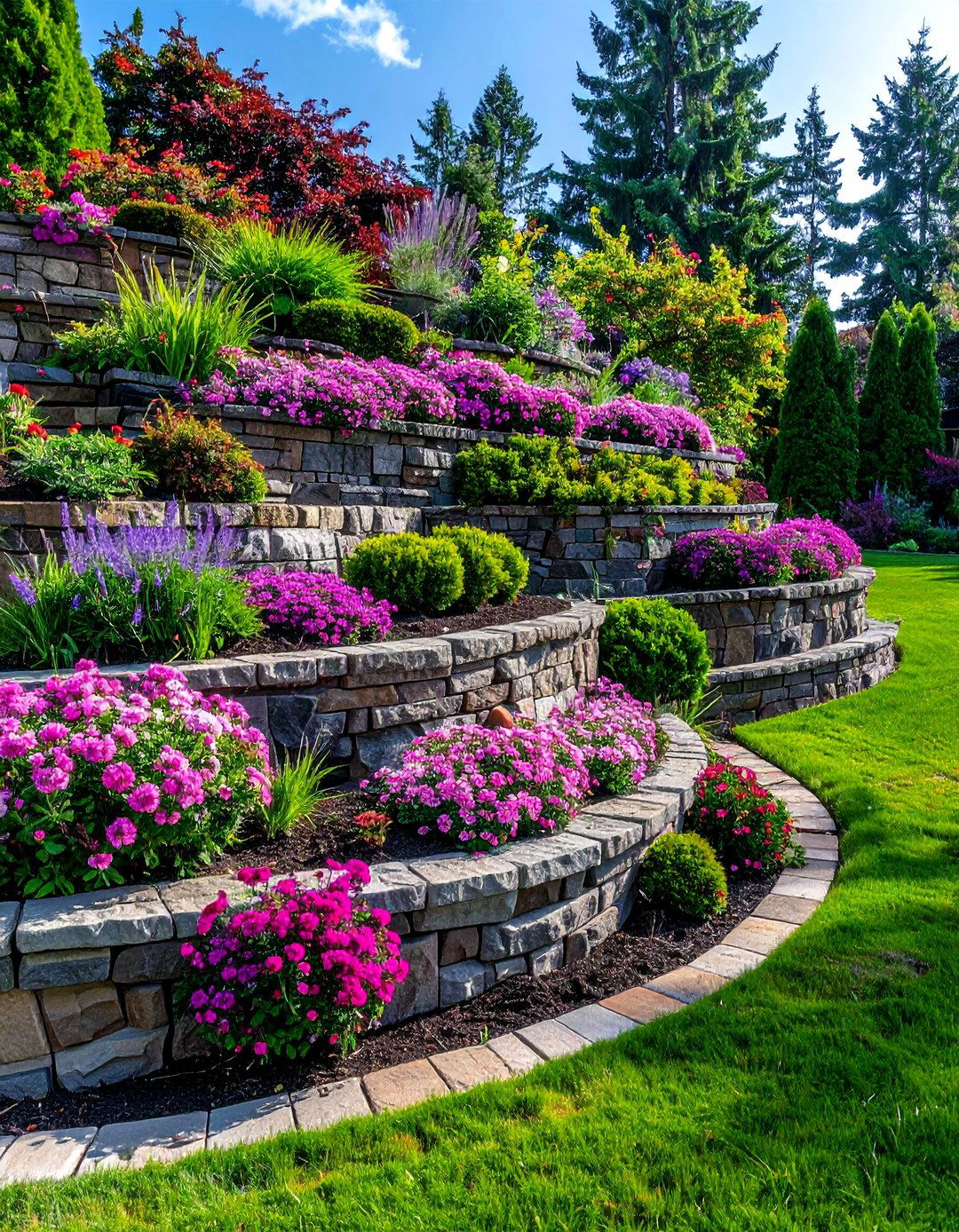
A tiered retaining wall offers a brilliant solution for sloped corners, turning a challenging grade into a stunning multi-level display. By constructing two or three curved or straight tiers from materials like natural stone, concrete blocks, or timber, you create distinct planting pockets. This design not only prevents soil erosion but also adds immense visual interest and depth. Plant the top tiers with taller shrubs or cascading flowers like creeping phlox, while the lower levels can host a mix of perennials and colorful annuals. This structured approach allows each plant to be showcased, creating a lush, textured tapestry that draws the eye upward and makes the space feel larger.
2. Corner Landscaping with a Small Pond and Waterfall
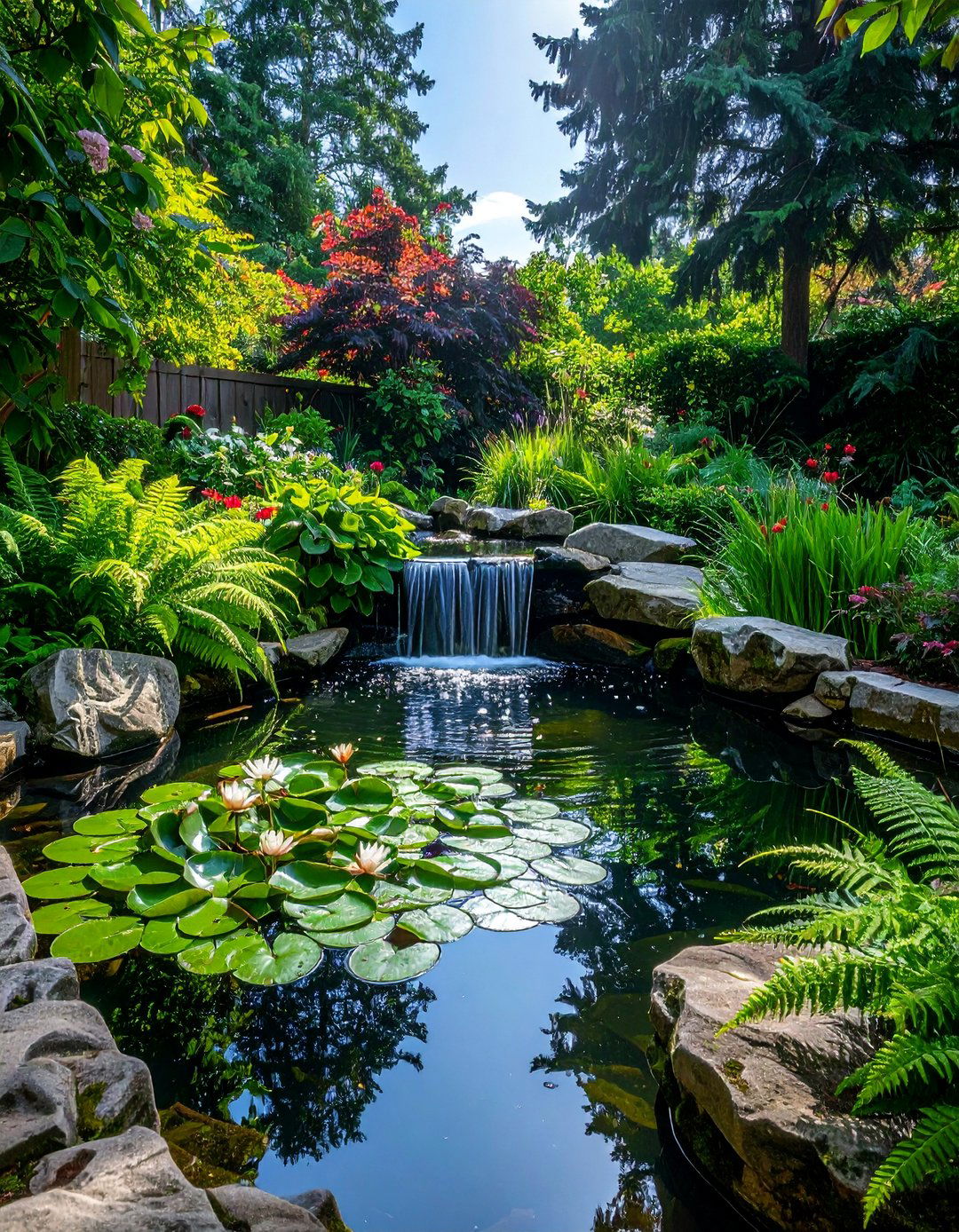
For a truly tranquil corner, consider installing a small pond complete with a gentle waterfall. The sound of trickling water introduces a soothing auditory element, effectively masking neighborhood noise and creating a serene atmosphere. A pre-formed liner or a flexible EPDM liner can be used to create the pond, nestled into the corner and surrounded by smooth river rocks and boulders for a natural look. Incorporate water-loving plants like water lilies, iris, and rushes both in and around the pond. The combination of water, stone, and aquatic plants establishes a peaceful ecosystem that attracts birds and dragonflies, turning a simple corner into a captivating natural oasis.
3. Building a Triangular Corner Pergola with Climbing Vines
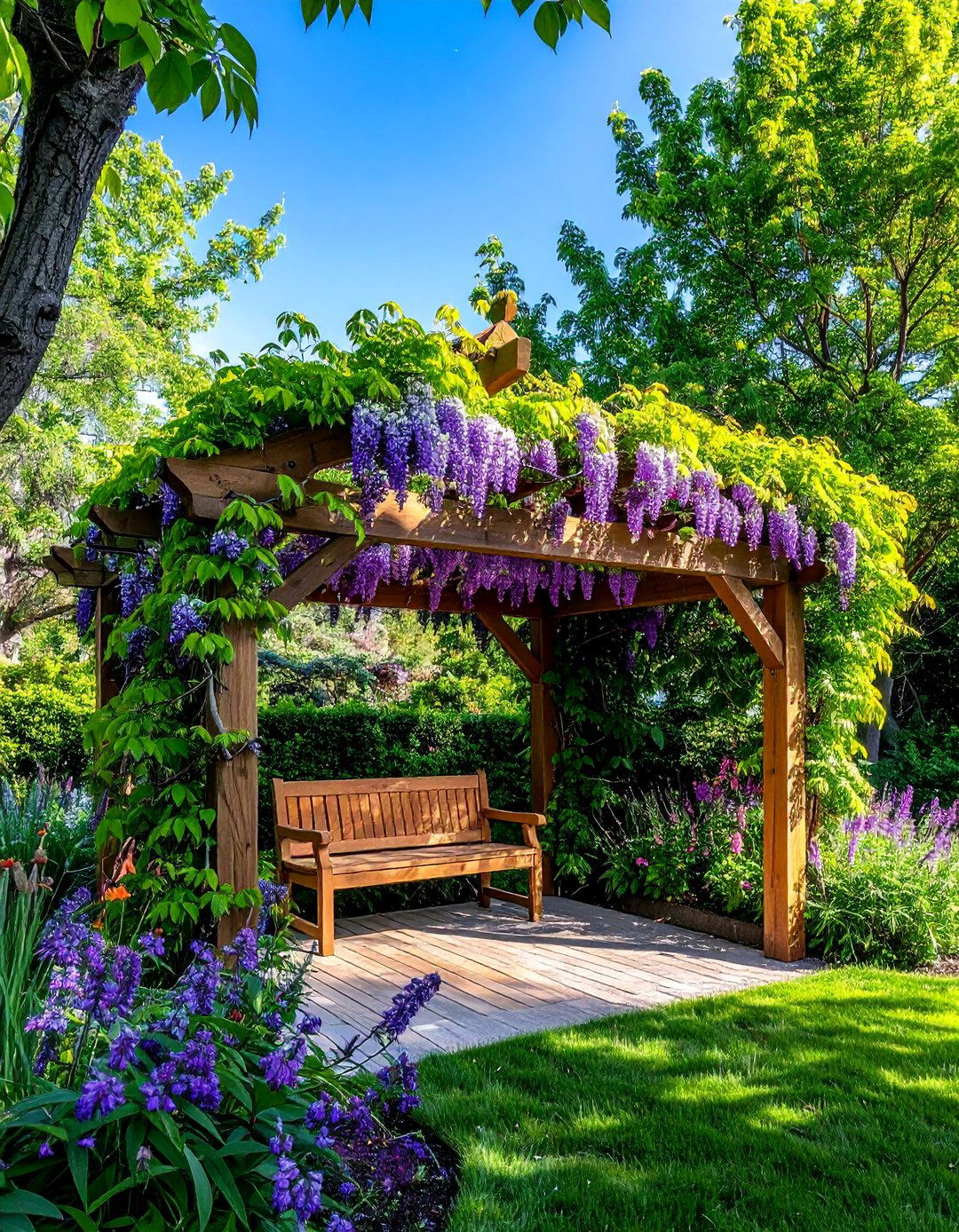
A triangular pergola is perfectly shaped to fit snugly into a yard's corner, instantly defining the space and adding vertical dimension. Constructed from wood or low-maintenance vinyl, this structure creates a sense of enclosure and provides welcome shade. To soften its lines and integrate it with the garden, train climbing plants like wisteria, clematis, or climbing roses to grow up the posts and across the rafters. Beneath the pergola, you can place a comfortable bench or a pair of chairs, establishing an intimate seating area. This combination of architecture and horticulture results in a charming, shaded retreat that feels like a secluded outdoor room.
4. Corner Landscaping with a Circular Paver Patio and Seating
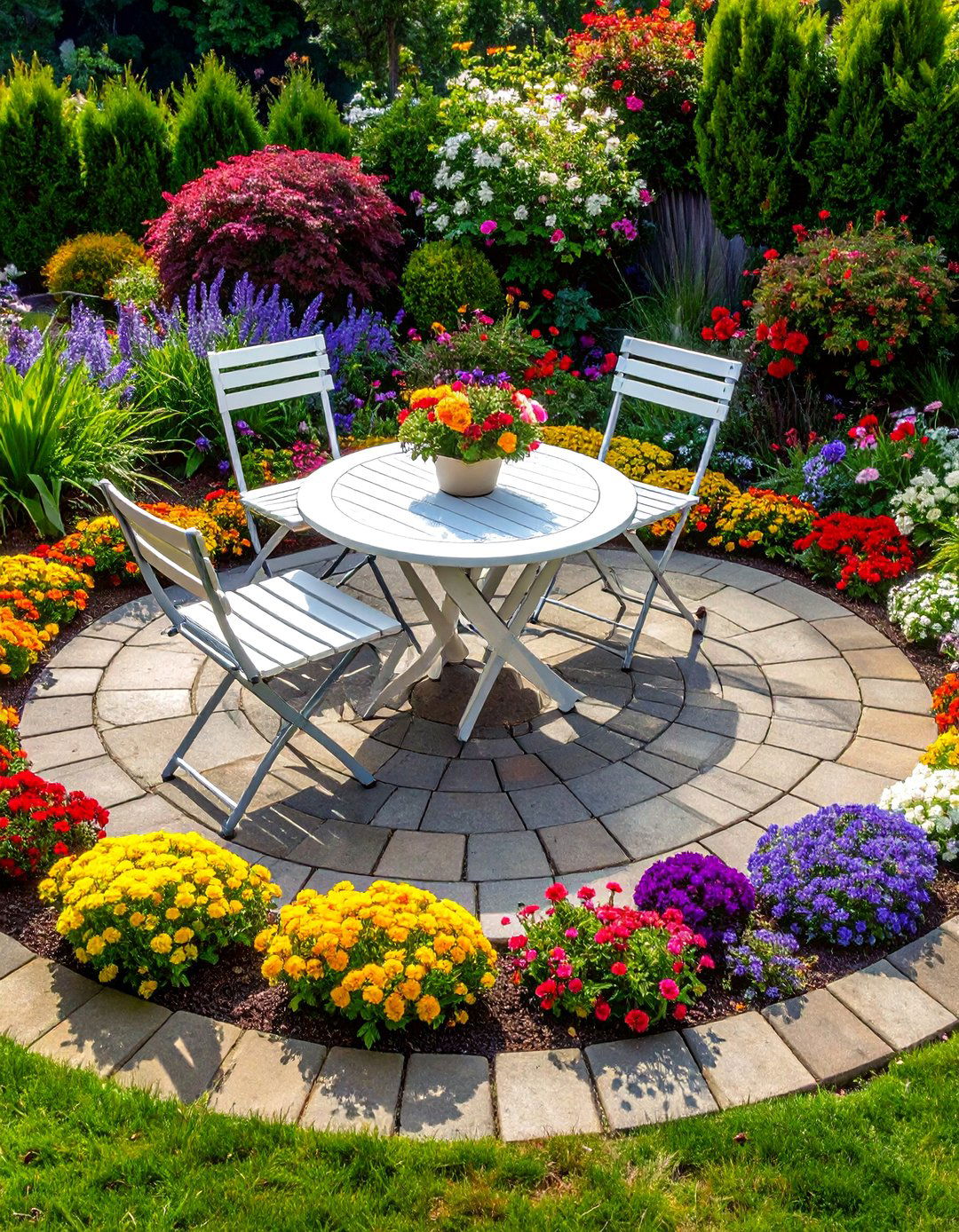
Creating a circular paver patio is an excellent way to anchor a corner and establish a functional, inviting gathering spot. The round shape contrasts beautifully with the sharp angles of a fence line, softening the overall look of the yard. Use pavers made of brick, flagstone, or concrete to lay a patio large enough for a small bistro set or a couple of comfortable armchairs. Encircle the patio with a border of low-growing shrubs, perennial flowers, or ornamental grasses to blend the hardscape seamlessly with the surrounding garden. This design provides a perfect place for morning coffee or evening conversations, making practical use of a previously empty corner.
5. Installing a Stacked Stone Corner Water Feature
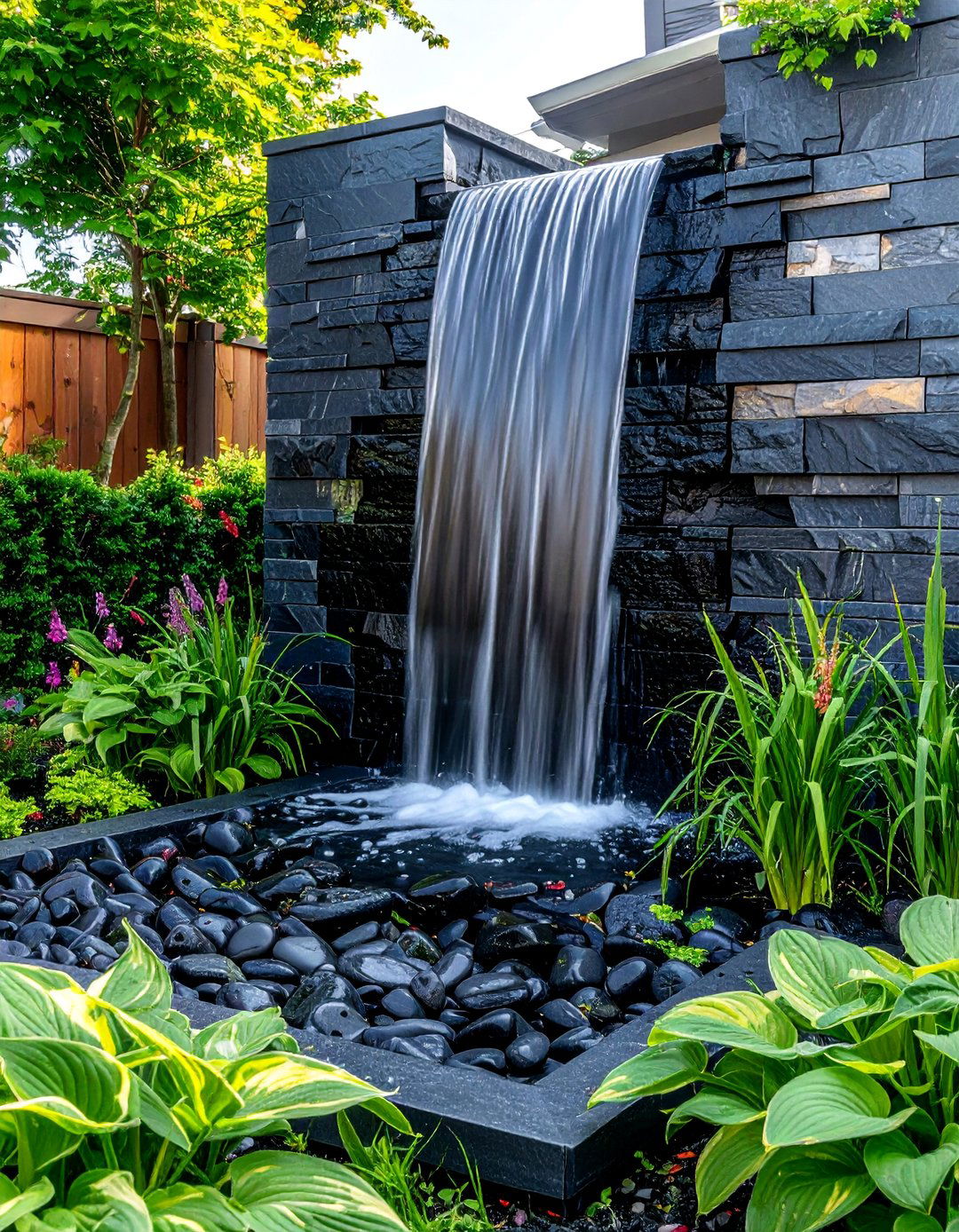
A stacked stone wall fountain offers a dramatic and sophisticated water feature without the maintenance of a full pond. These self-contained units are designed to fit neatly into a corner, with water bubbling from the top and cascading down the textured stone face into a hidden reservoir below. The vertical design makes a strong visual statement while occupying minimal ground space. Surrounded by lush ferns, hostas, and moisture-loving perennials, the feature becomes a dynamic focal point. The gentle sound of flowing water enhances the garden's ambiance, creating a peaceful and elegant retreat that looks stunning both day and night, especially with added accent lighting.
6. Creating a Dry Creek Bed Corner Landscaping Design
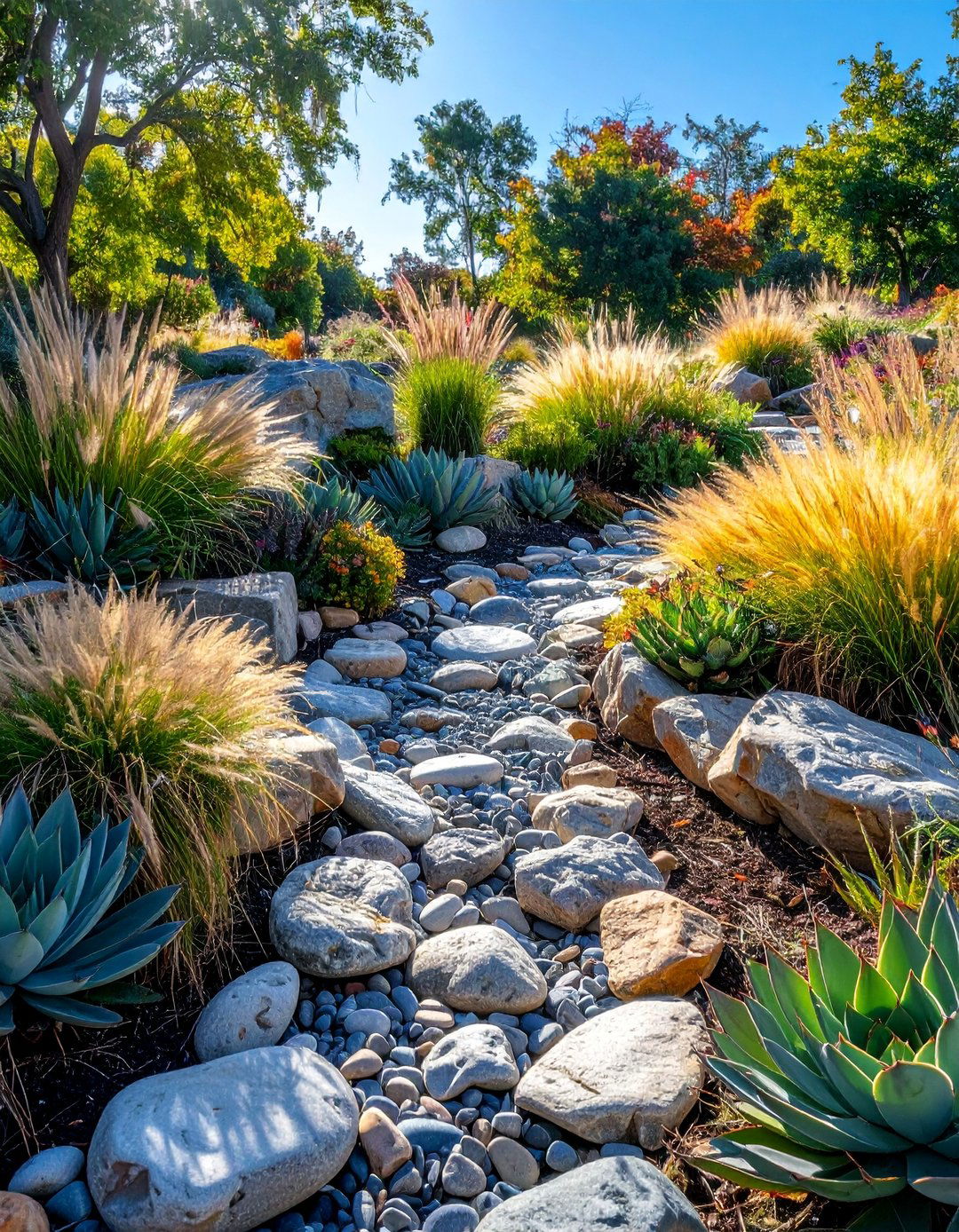
A dry creek bed offers a beautiful, low-maintenance solution for a corner, especially one with drainage issues. This design mimics a natural stream by arranging a meandering path of river rocks, pebbles, and small boulders. Start with larger stones along the edges and fill the center with smaller, smoother pebbles to create a realistic flow. To enhance the naturalistic feel, plant drought-tolerant grasses, succulents, and native perennials along the banks of the "creek." A small wooden bridge can be added for extra charm. This approach not only solves drainage problems by directing water flow but also adds texture and visual interest year-round without requiring any water.
7. Corner Landscaping with a Built-in Bench and Planter Boxes
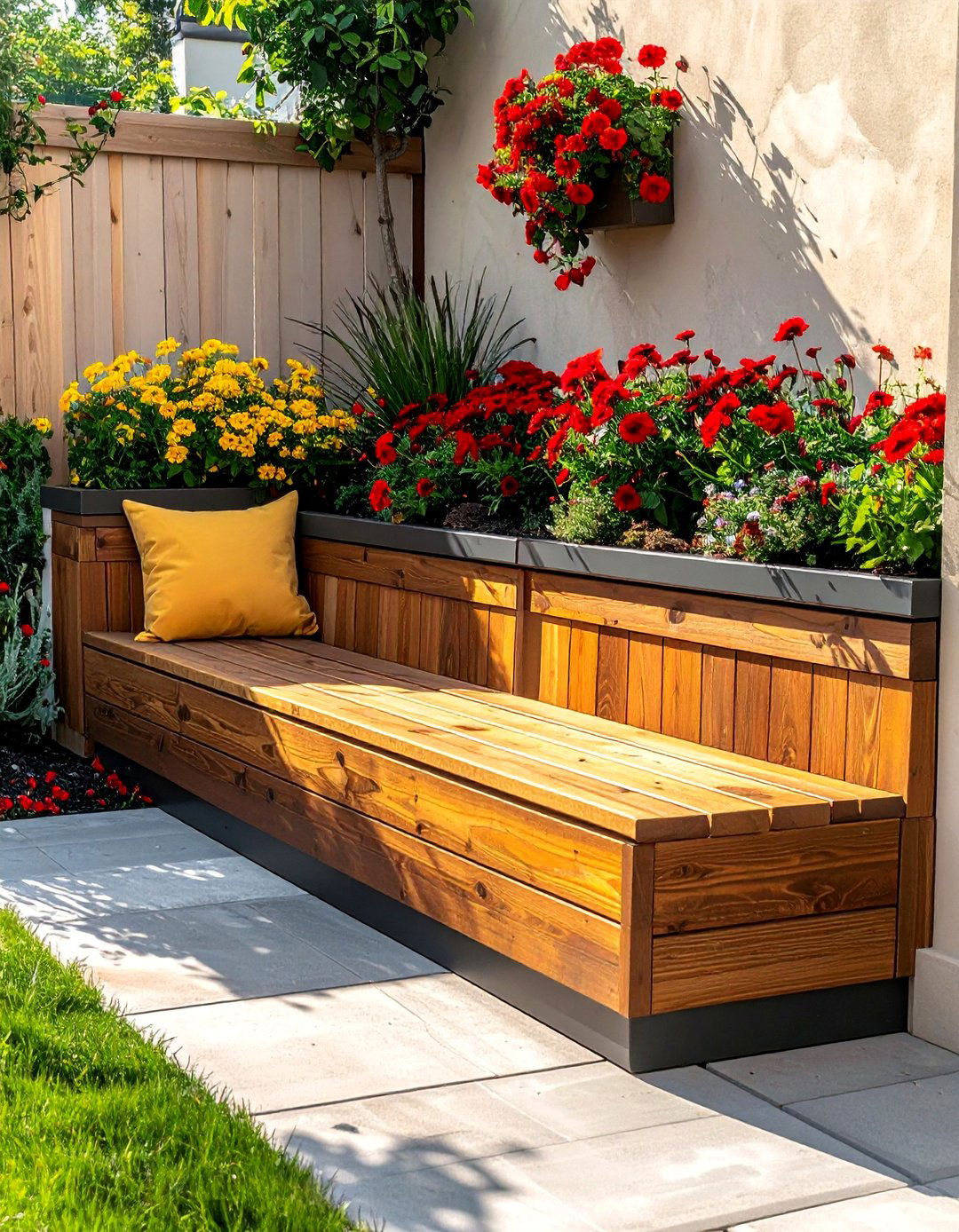
Maximize both seating and greenery by constructing a built-in L-shaped bench that fits perfectly into the corner. Made from wood, composite decking, or masonry, this permanent seating solution offers a clean, integrated look. Flank the bench with matching built-in planter boxes to create a cohesive design. The planters can be filled with a mix of tall, slender plants for privacy, colorful flowers for visual appeal, and trailing plants that spill over the sides. This combination transforms the corner into a cozy, self-contained nook that is perfect for relaxing or socializing, providing comfortable seating surrounded by the beauty and fragrance of a contained garden.
8. Designing a Japanese Zen Corner Garden with Rocks and Bamboo
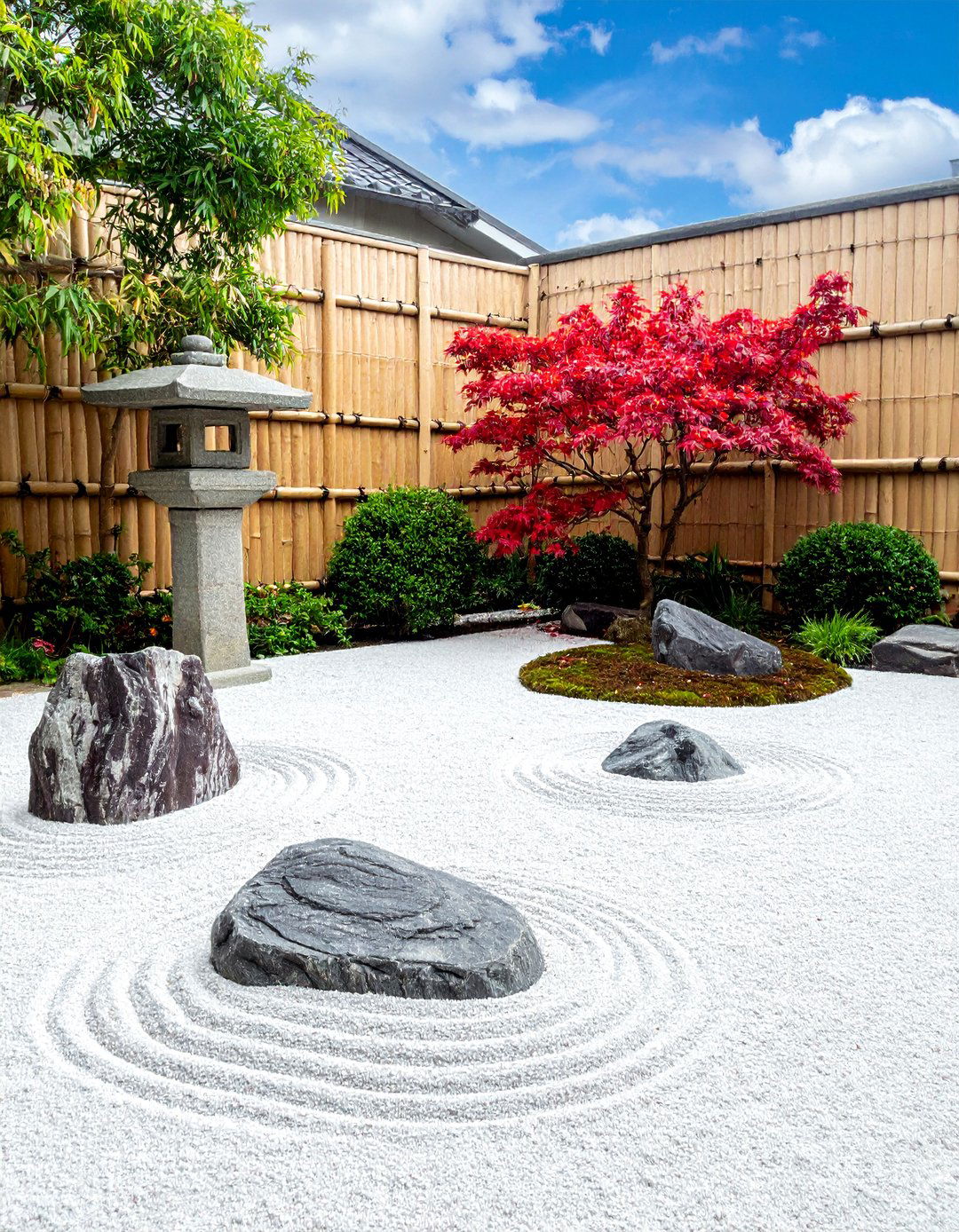
For a space dedicated to tranquility and contemplation, a Japanese Zen garden is an ideal choice. Utilize the corner to create a minimalist scene featuring carefully placed boulders, fine gravel or sand raked into patterns, and a simple stone lantern. A small bamboo screen can serve as a backdrop, adding privacy and reinforcing the theme. Plantings should be sparse and deliberate—think a single Japanese maple with striking foliage, some mondo grass for texture, and a clump of moss. Every element in this design is symbolic and intentional, working together to craft a serene and artful retreat that encourages mindfulness and quiet reflection in your own backyard.
9. A Secluded Corner Fire Pit Area with Gravel Base
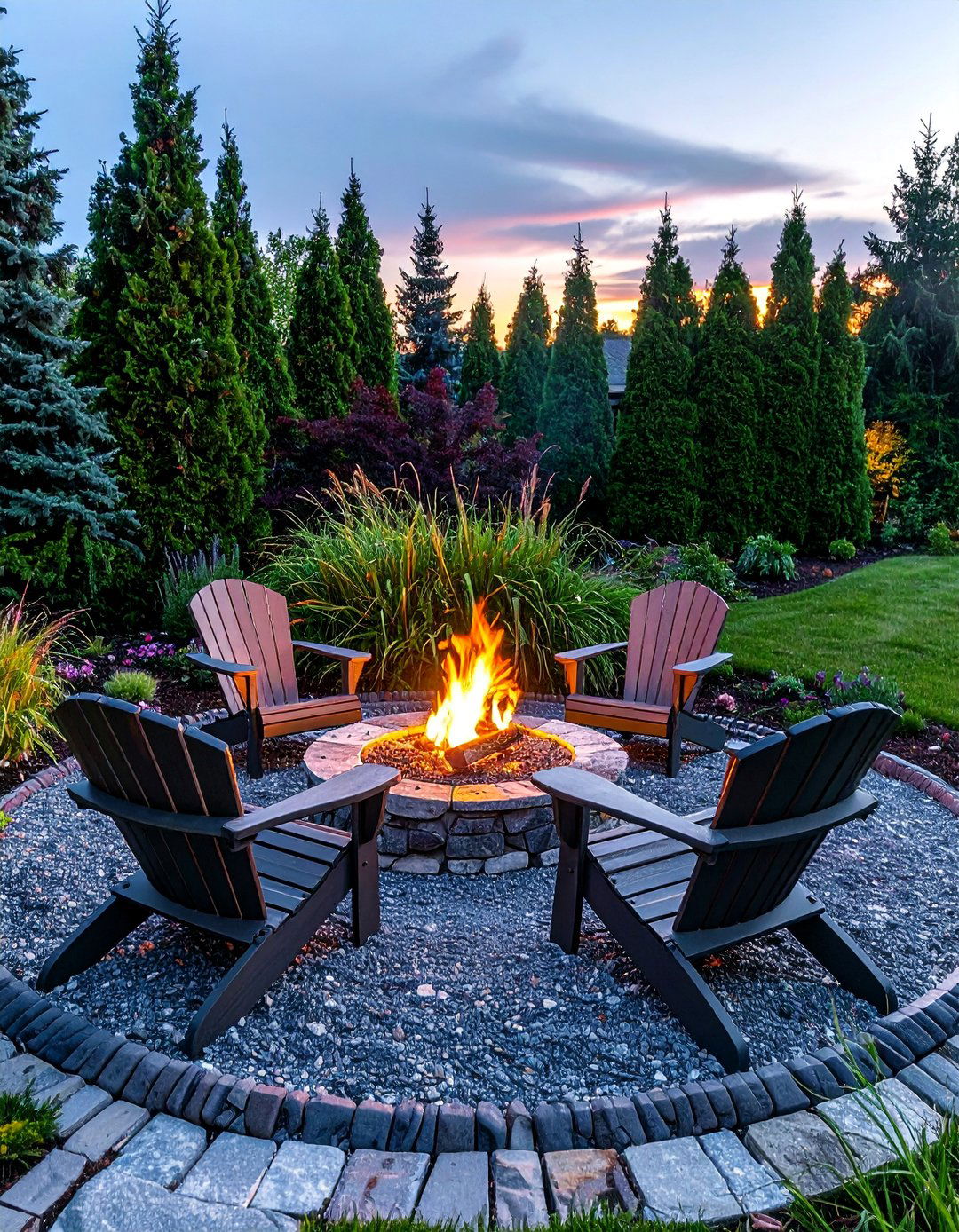
Turn a neglected corner into a popular year-round destination by creating a cozy fire pit area. A circular metal or stone fire pit serves as the centerpiece, providing warmth and a natural gathering point. For the base, use pea gravel or crushed stone, which is a fire-safe, low-maintenance, and affordable option that defines the space and keeps weeds at bay. Arrange comfortable Adirondack chairs or a curved seating wall around the pit. To enhance the sense of seclusion, plant a backdrop of tall evergreen shrubs or ornamental grasses. This design establishes an inviting outdoor living room perfect for entertaining guests or enjoying quiet evenings under the stars.
10. Corner Landscaping with an Ornamental Specimen Tree
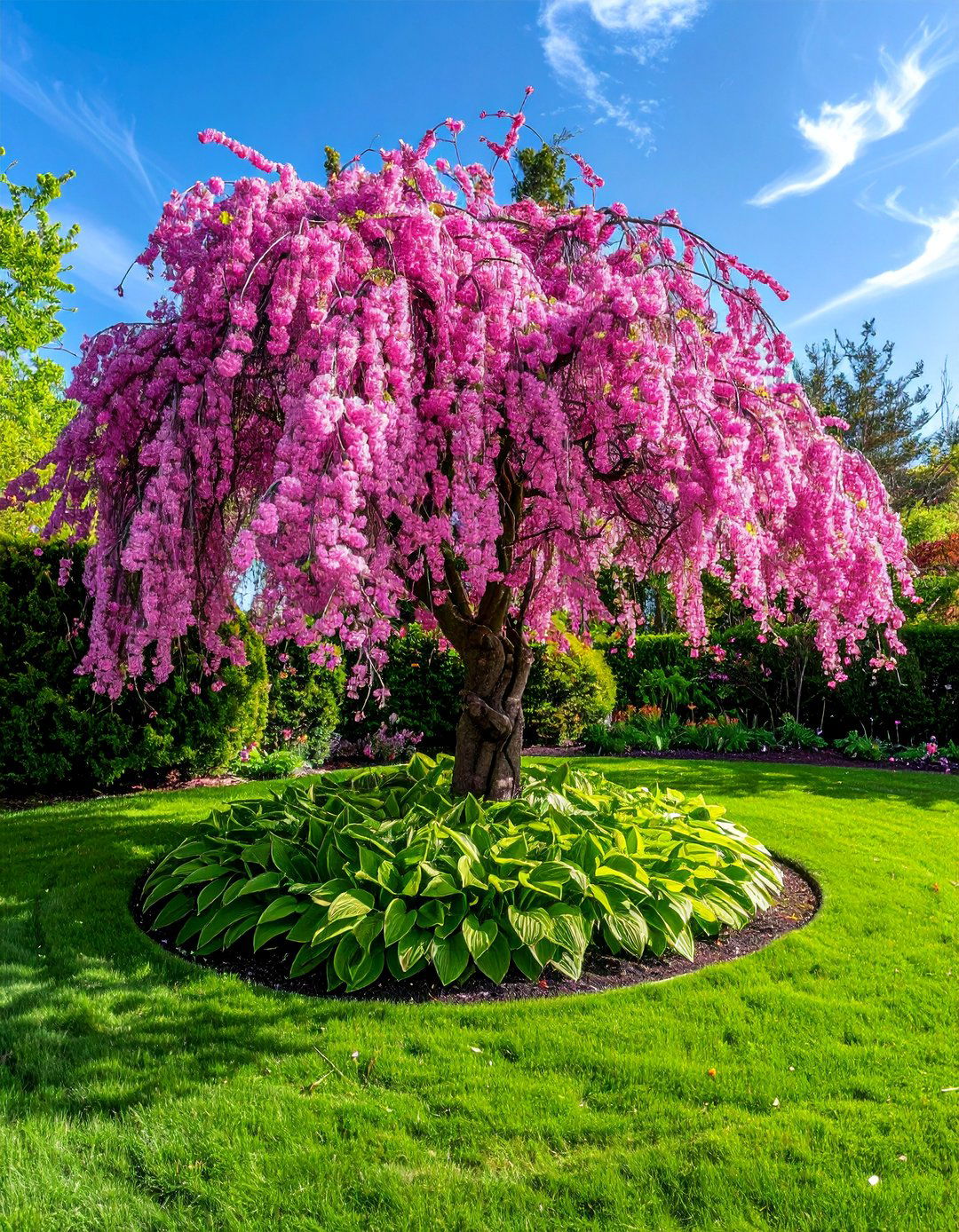
Planting a single, stunning specimen tree can transform a plain corner into a dramatic focal point. Choose a tree known for its unique form, seasonal color, or beautiful flowers, such as a Japanese maple, a dogwood, or a weeping cherry. Ensure the tree's mature size is appropriate for the space so it won't overwhelm the area or interfere with fences or structures. Underplant the tree with a complementary groundcover or a bed of low-growing shade perennials like hostas and astilbes. This simple yet elegant approach adds verticality, structure, and year-round interest, anchoring the corner of your yard with a powerful statement of natural beauty.
11. Planting a Layered Corner Garden with Mixed Perennials
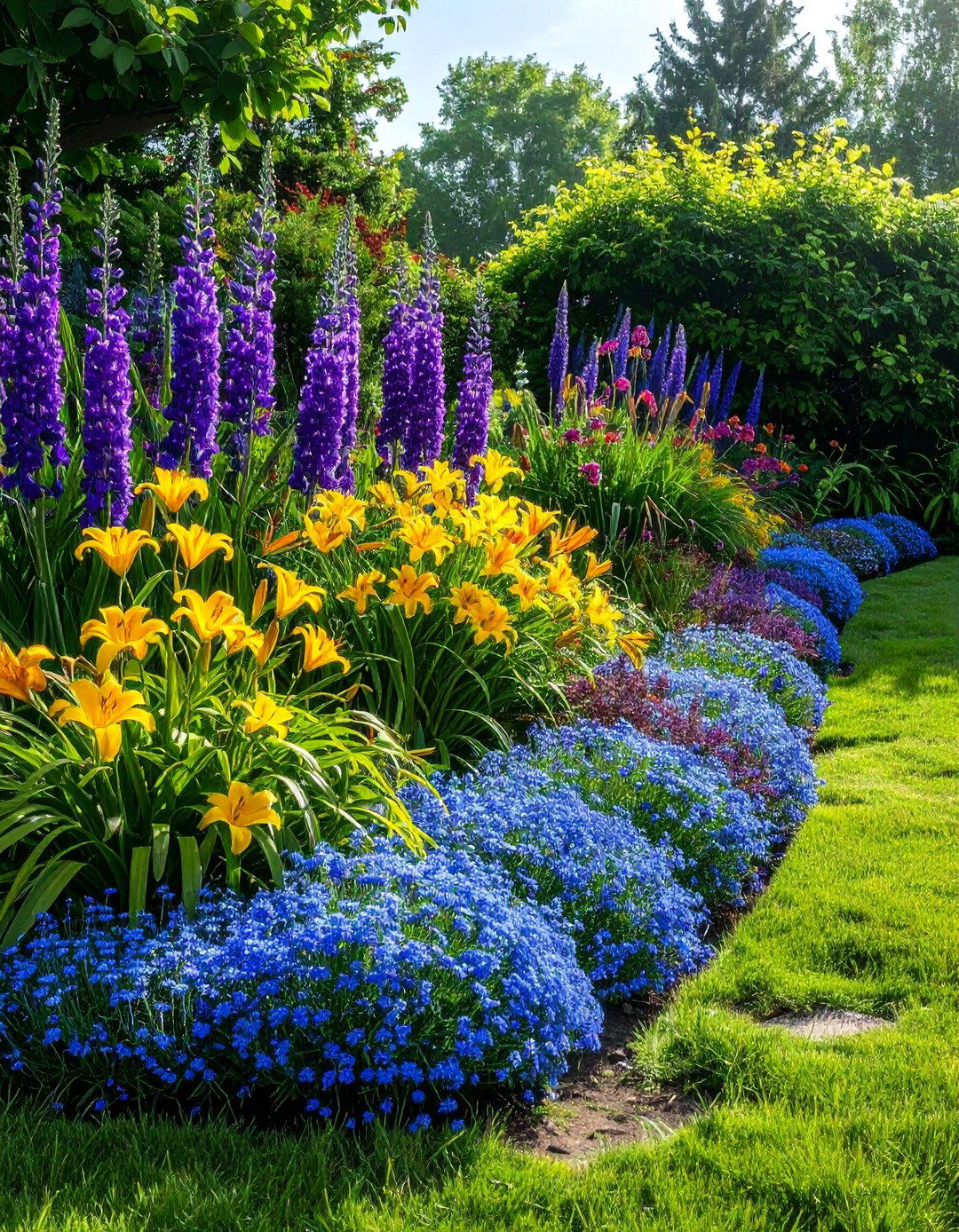
A layered planting scheme creates a lush, full garden bed with continuous interest throughout the seasons. In your corner, start with a taller shrub or a small ornamental tree as the back layer to provide height and structure. In front of that, add a middle layer of medium-sized perennials with varying bloom times and foliage textures, such as coneflowers, salvia, and daylilies. Finally, fill in the front with low-growing groundcovers or border plants like creeping thyme or sedum. This technique draws the eye from front to back, creating a sense of depth and abundance. The result is a dynamic, multi-dimensional garden that looks professionally designed.
12. A Raised Bed Corner Vegetable and Herb Garden
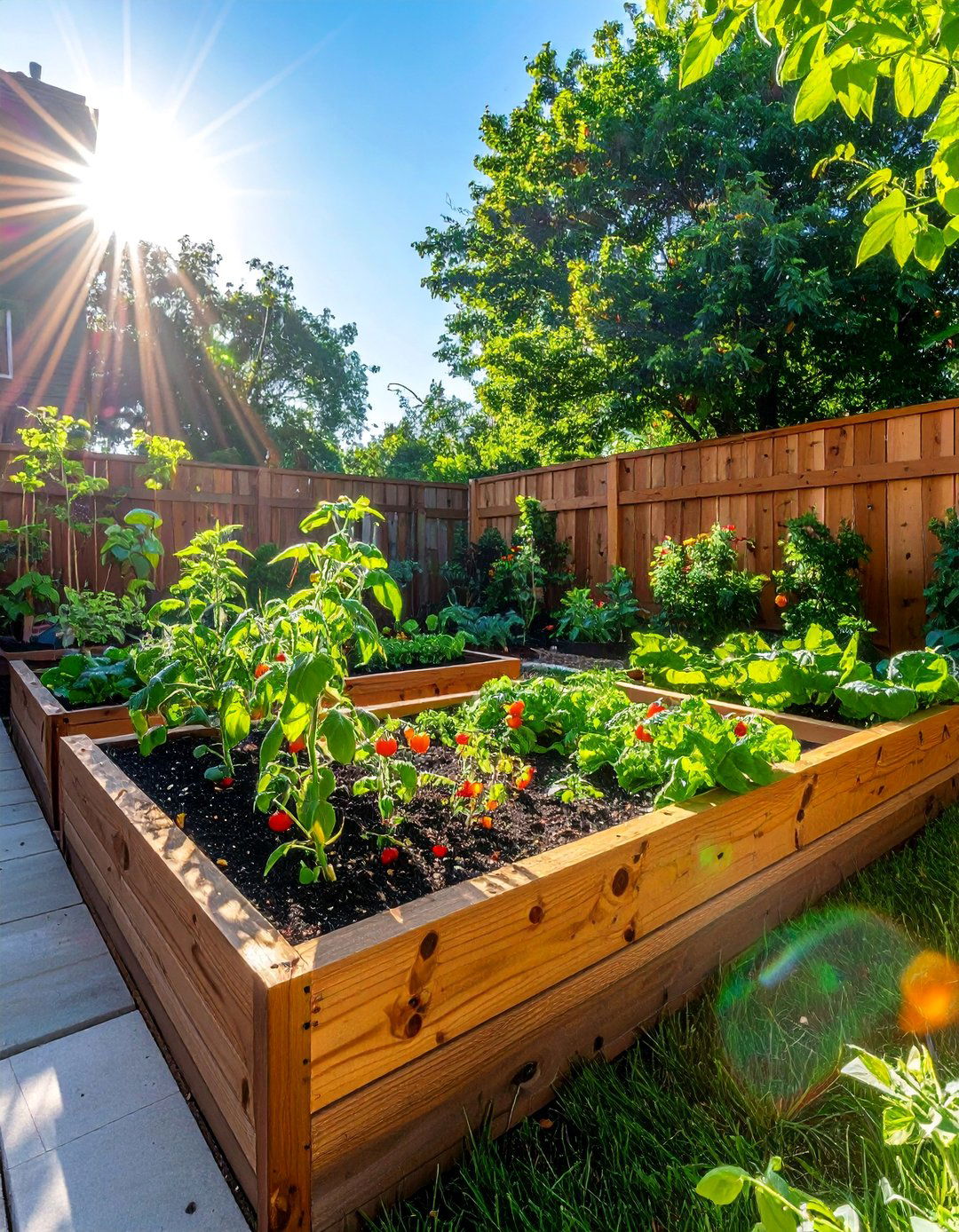
For those with a green thumb, a corner is the perfect spot for a productive vegetable and herb garden. Construct L-shaped or triangular raised beds from wood, stone, or galvanized steel to fit the space perfectly. Raised beds offer numerous benefits, including better drainage, fewer weeds, and easier access without bending. Fill the beds with high-quality soil and plant a mix of your favorite vegetables, like tomatoes and peppers, alongside culinary herbs such as basil, rosemary, and mint. This design not only provides fresh produce for your kitchen but also adds a charming, rustic aesthetic to your yard, turning an unused corner into a source of bounty.
13. Corner Landscaping with a Vertical Garden Wall
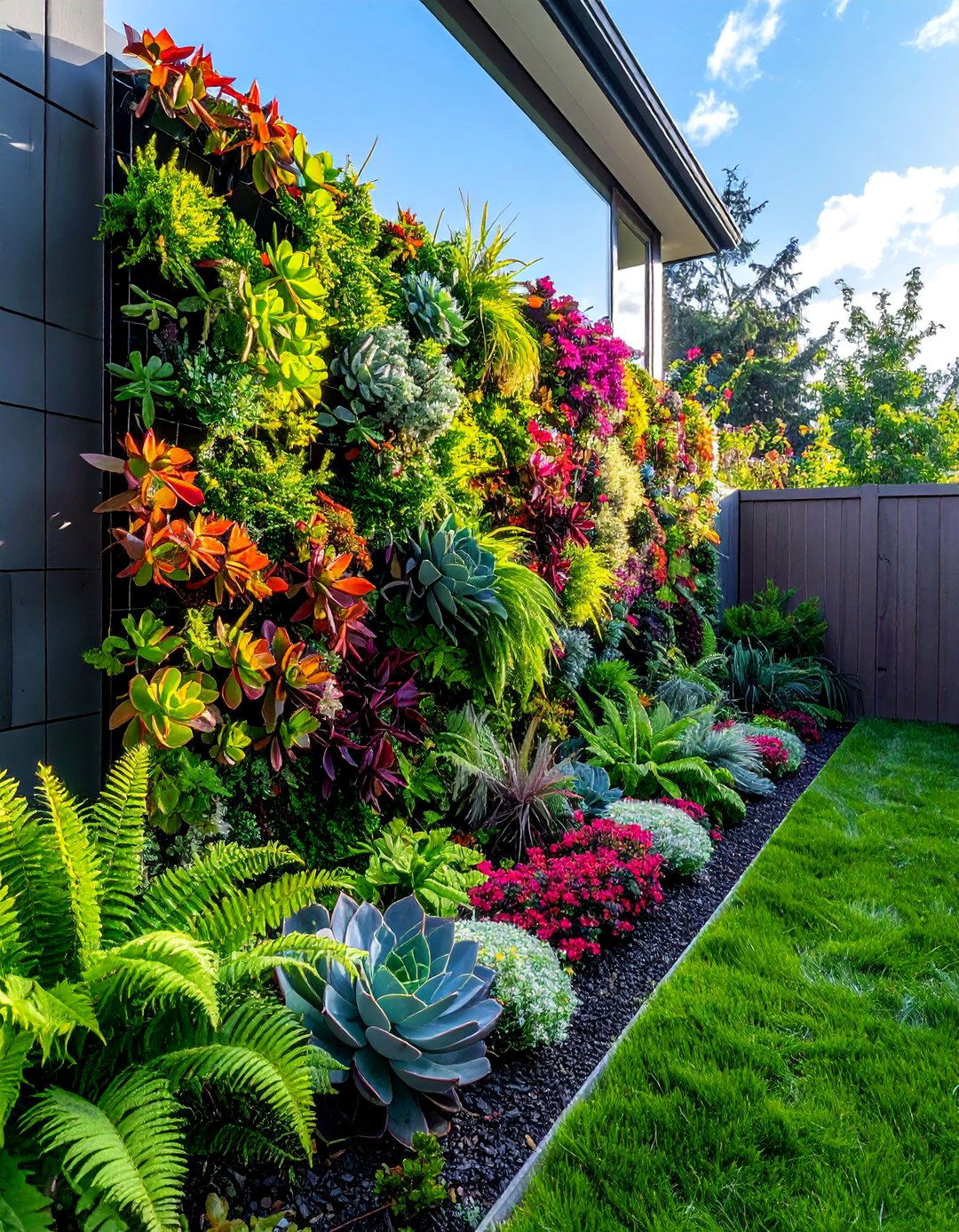
When ground space is limited, a vertical garden is an innovative way to introduce a profusion of greenery. Install a vertical planter system, a trellis with hanging pots, or a wall-mounted pocket planter on the corner fences. This "living wall" can be planted with a variety of succulents, herbs, ferns, or colorful annuals, creating a stunning tapestry of textures and hues. A vertical garden draws the eye upward, making the space feel larger and adding a unique architectural element. It’s a modern and space-efficient solution that transforms a dull corner into a vibrant and living piece of art, perfect for contemporary and small-yard landscapes.
14. Using Large Boulders for a Naturalistic Corner Design
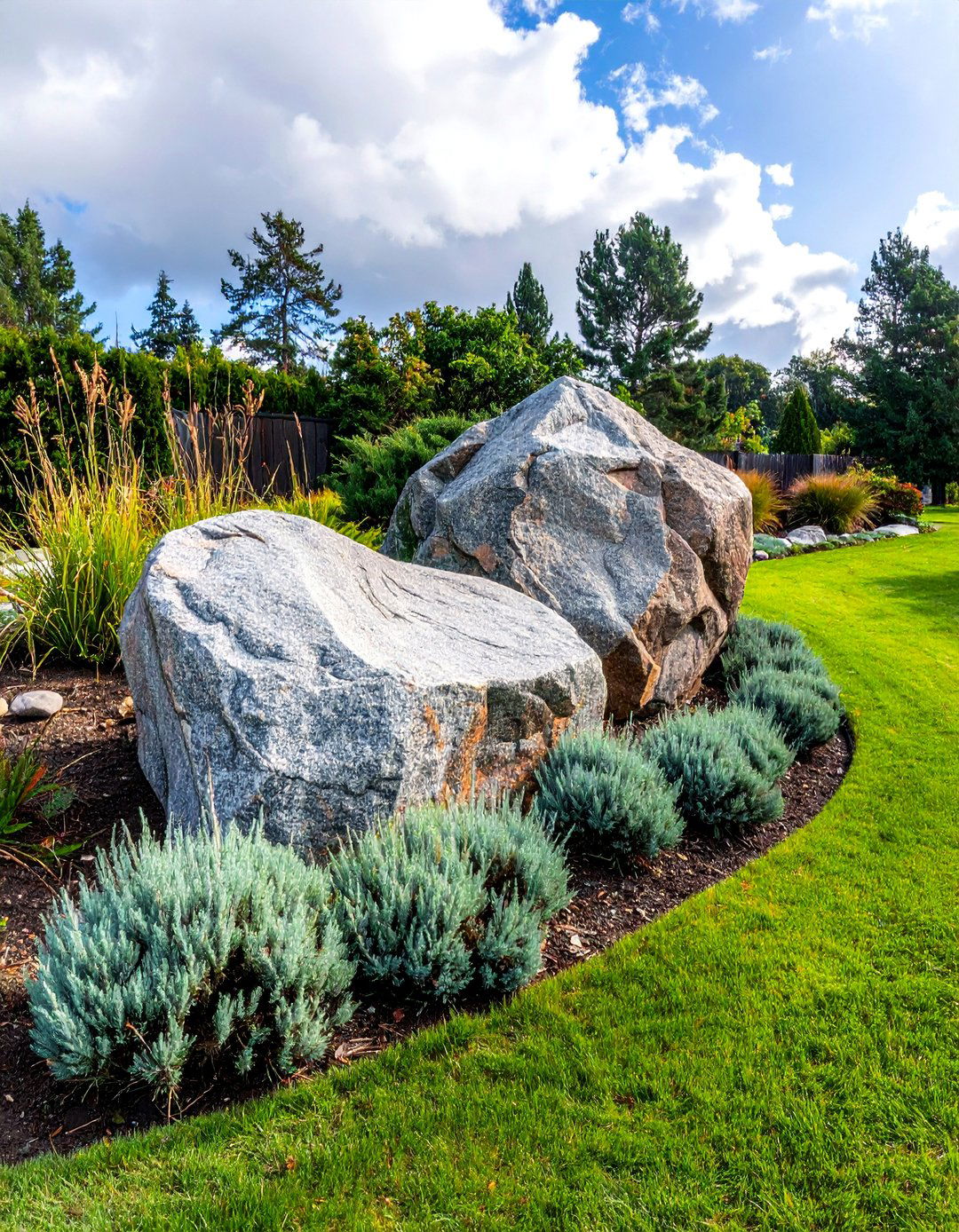
Incorporating large, strategically placed boulders can instantly give your corner a sense of permanence and natural drama. Select two or three boulders of varying sizes and bury them partially in the ground to make them look as though they have been there for centuries. Arrange them in a tight cluster to create a powerful focal point. Soften the hardscape by planting around the boulders with low-maintenance, rugged plants like ornamental grasses, creeping juniper, and sedum. This design mimics a natural rock outcropping and adds texture, elevation, and a timeless, rugged beauty to the landscape with minimal upkeep required once established.
15. A Cottage-Style Corner Garden with a Picket Fence
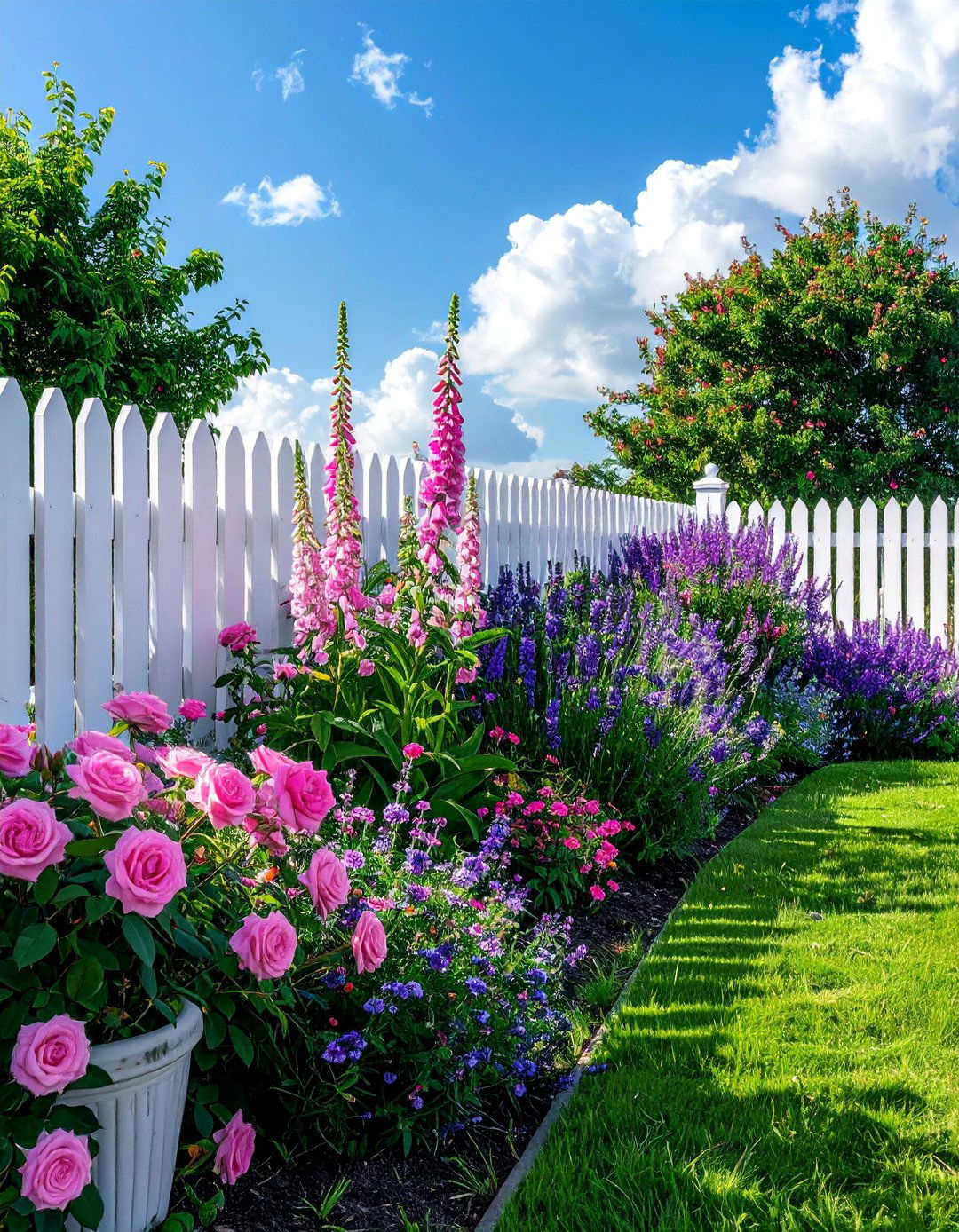
Embrace a charming, informal look by creating a cottage-style garden in your yard's corner. A short, decorative picket fence section installed in an L-shape can define the space and provide a classic backdrop. Fill the enclosed area with a joyful jumble of traditional cottage garden plants like roses, foxgloves, delphiniums, and lavender. Allow plants to self-seed and spill over the edges of the bed for a relaxed and abundant feel. A vintage birdbath or a rustic wooden bench can be added as a quaint focal point. This design style creates a romantic and whimsical retreat that is bursting with color, fragrance, and timeless appeal.
16. Corner Landscaping with a Modern Metal Sculpture
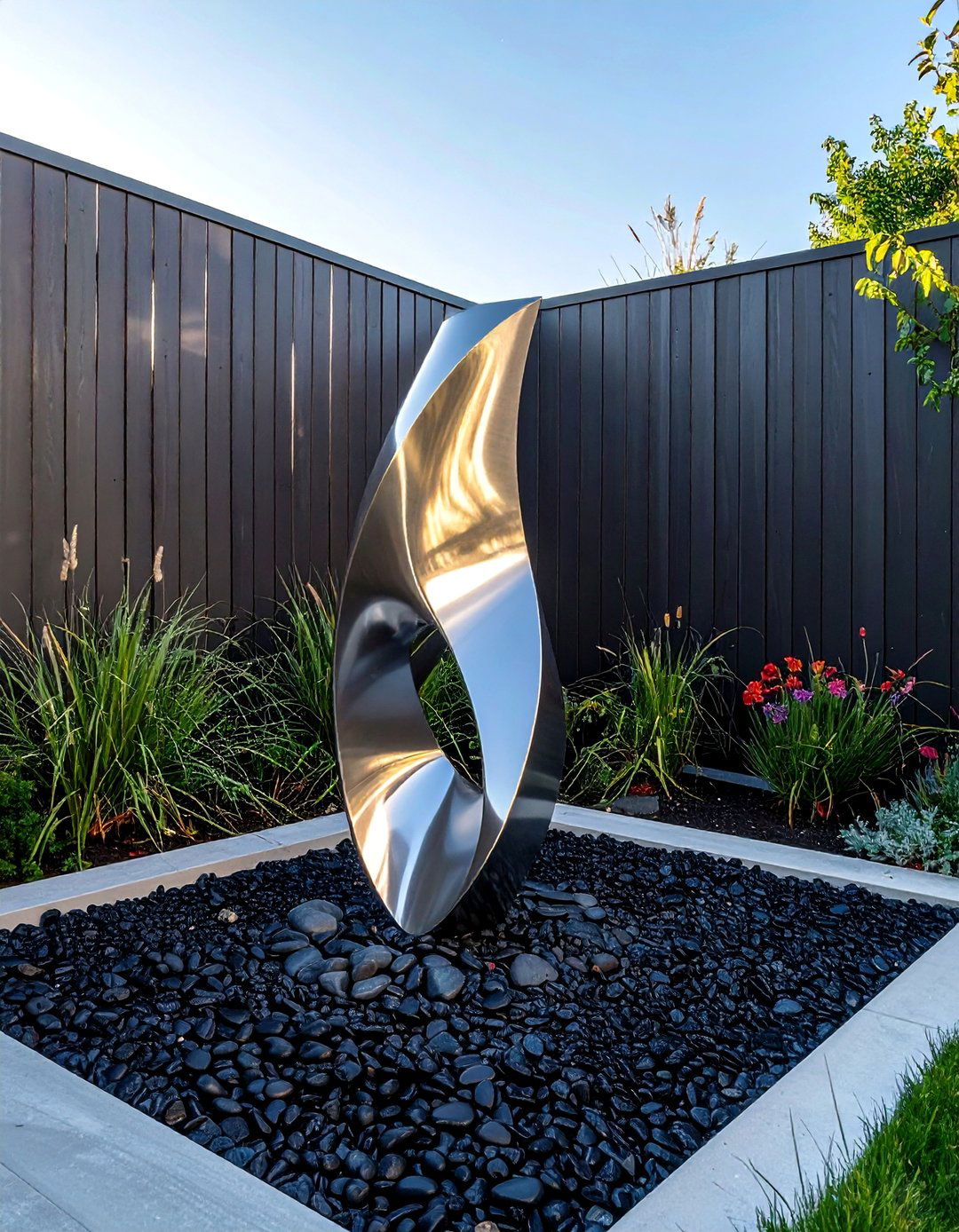
For a bold and artistic statement, place a modern metal sculpture in a prominent corner. This approach is perfect for contemporary or minimalist landscapes where clean lines and strong forms are valued. Choose a sculpture with a shape and finish that complements your home’s architecture, whether it's a rust-colored corten steel piece or a sleek stainless steel design. Keep the surrounding landscaping simple to allow the artwork to take center stage. A bed of smooth river stones, a neatly manicured patch of grass, or a few strategically placed ornamental grasses can provide the perfect, uncluttered backdrop, turning your corner into an elegant outdoor art gallery.
17. Building a Corner Deck for Outdoor Dining
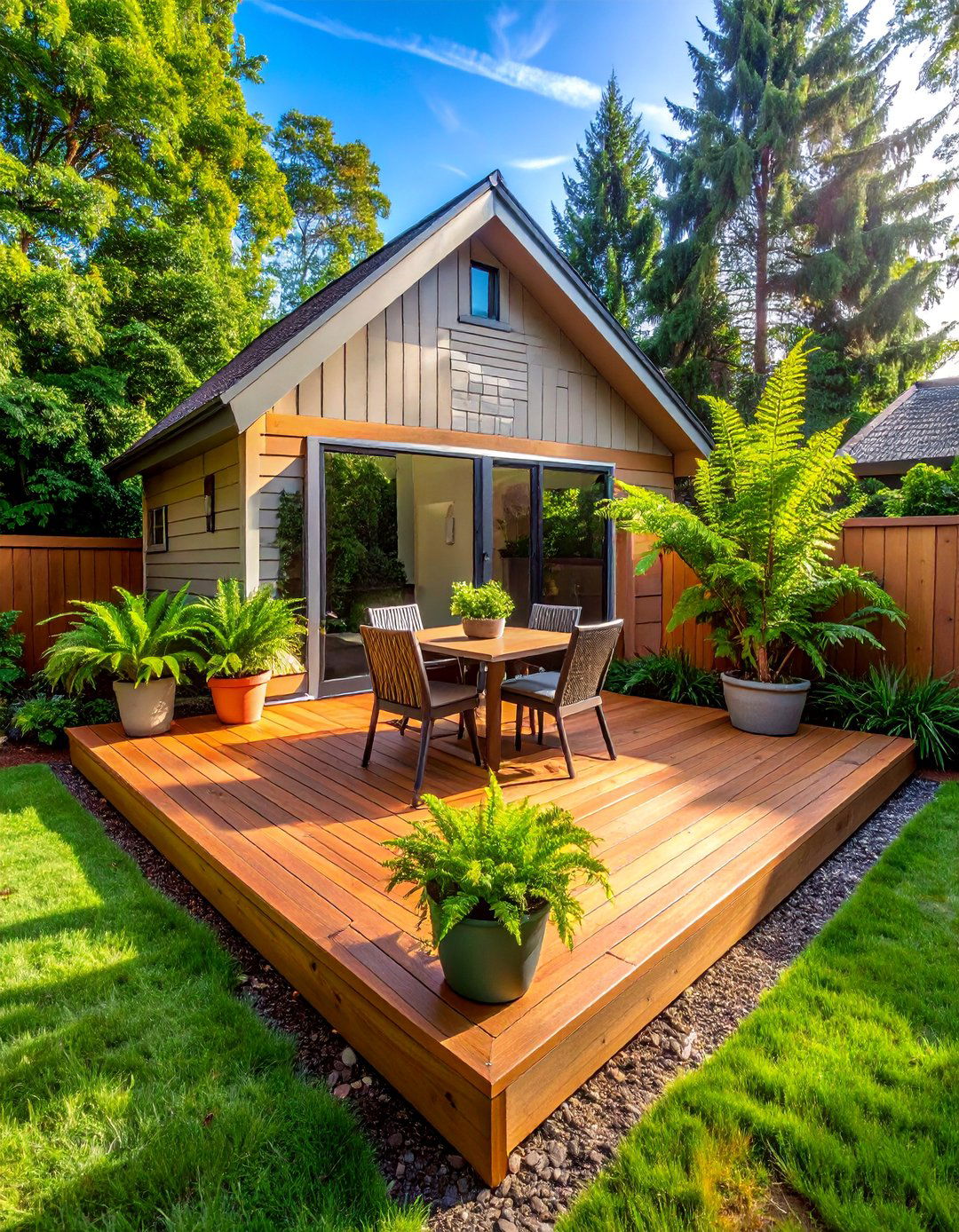
A corner deck can be an incredibly efficient way to add a functional outdoor living area. A triangular or five-sided deck can be custom-built to fit the corner perfectly, maximizing usable space. This raised platform creates a distinct zone for dining or lounging, separating it from the rest of the lawn. Use durable materials like composite decking or pressure-treated wood. Surround the deck with built-in planters or leave space for large container plants to soften the edges and add greenery. With enough room for a small table and chairs, this corner deck becomes a private, elevated perch for enjoying meals outdoors while overlooking your garden.
18. A Butterfly and Pollinator Corner Garden
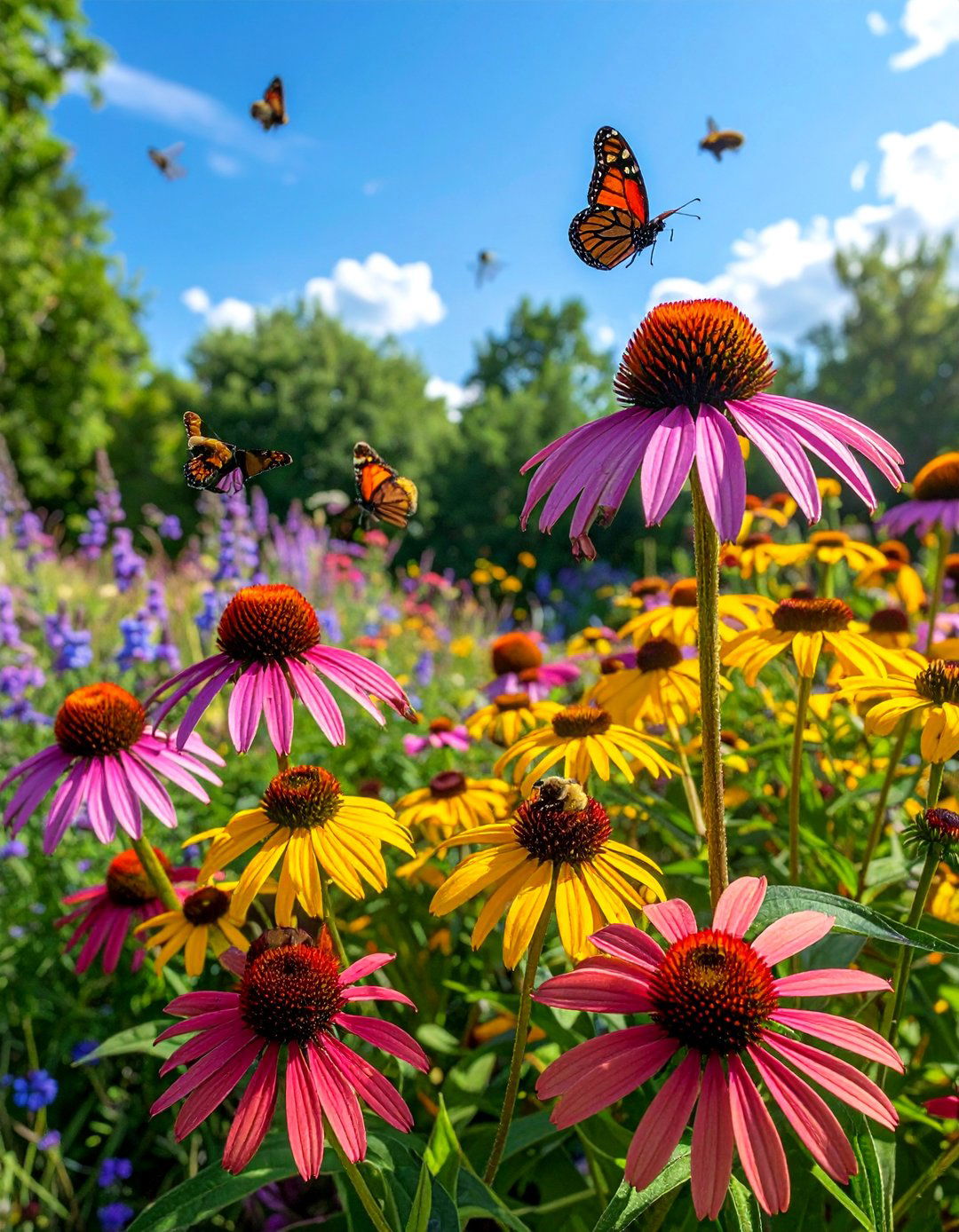
Dedicate a corner of your yard to supporting local wildlife by planting a butterfly and pollinator garden. Select a sunny spot and fill it with nectar-rich native plants that bloom sequentially from spring through fall. Good choices include milkweed for monarch butterflies, coneflowers, bee balm, and salvia. Arrange plants in clusters to make them more attractive to pollinators. Add a shallow water source, like a birdbath with pebbles, to provide a drinking spot for bees and butterflies. This beautiful and lively garden will not only be abuzz with activity but will also contribute positively to your local ecosystem, providing endless fascination.
19. Corner Landscaping with Landscape Lighting for Ambiance
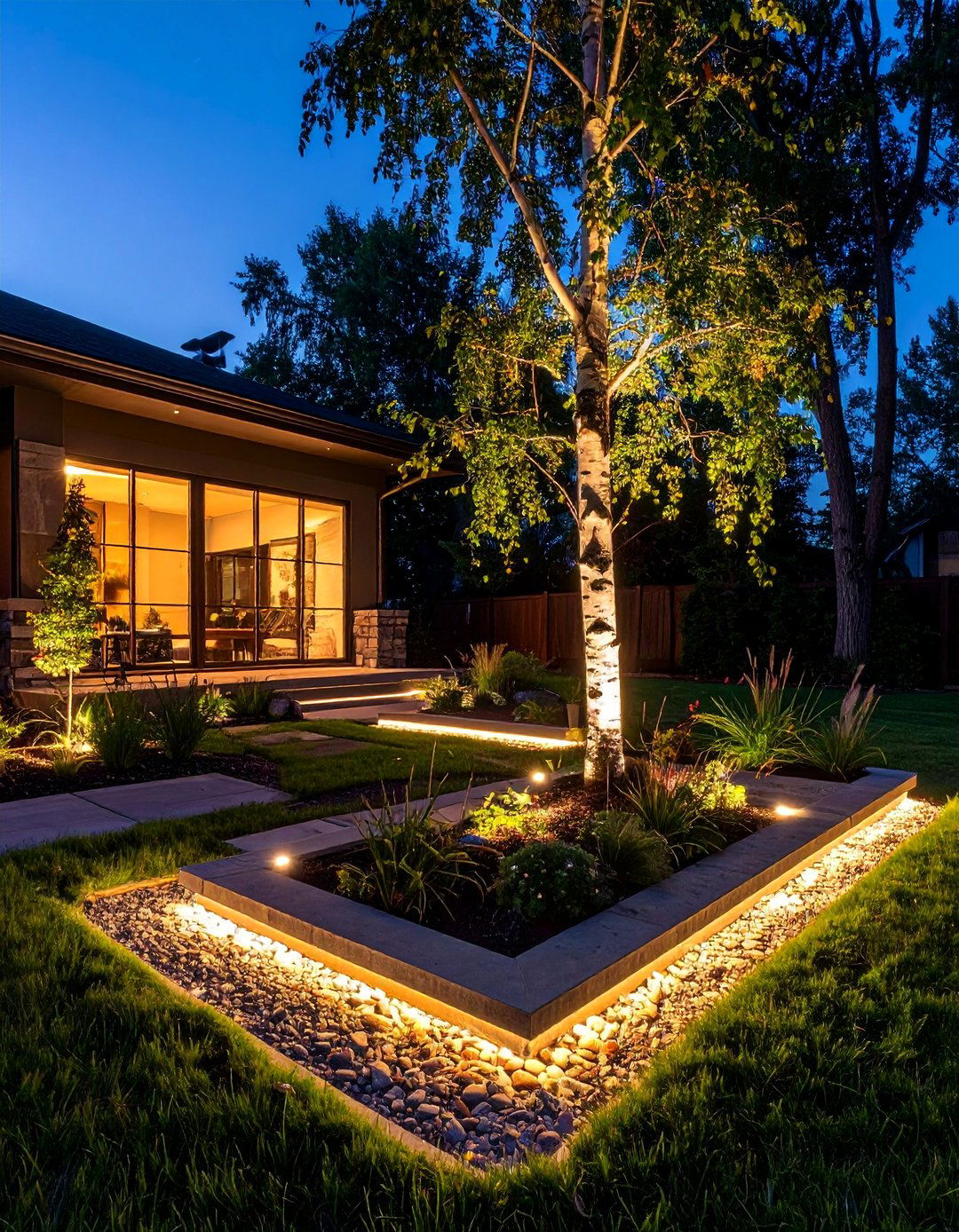
Thoughtful landscape lighting can completely transform a corner from a dark, forgotten space into a magical nighttime feature. Use a combination of lighting techniques to create depth and ambiance. Place an uplight at the base of a specimen tree to highlight its branching structure. Use path lights to softly illuminate a walkway or the edge of a patio. Install downlights in a pergola or on a fence to cast a gentle glow over a seating area. Low-voltage LED lights are energy-efficient and easy to install. This strategy extends the usability of your corner well into the evening, creating a warm, inviting, and secure atmosphere.
20. A Low-Maintenance Succulent and Rock Corner Garden
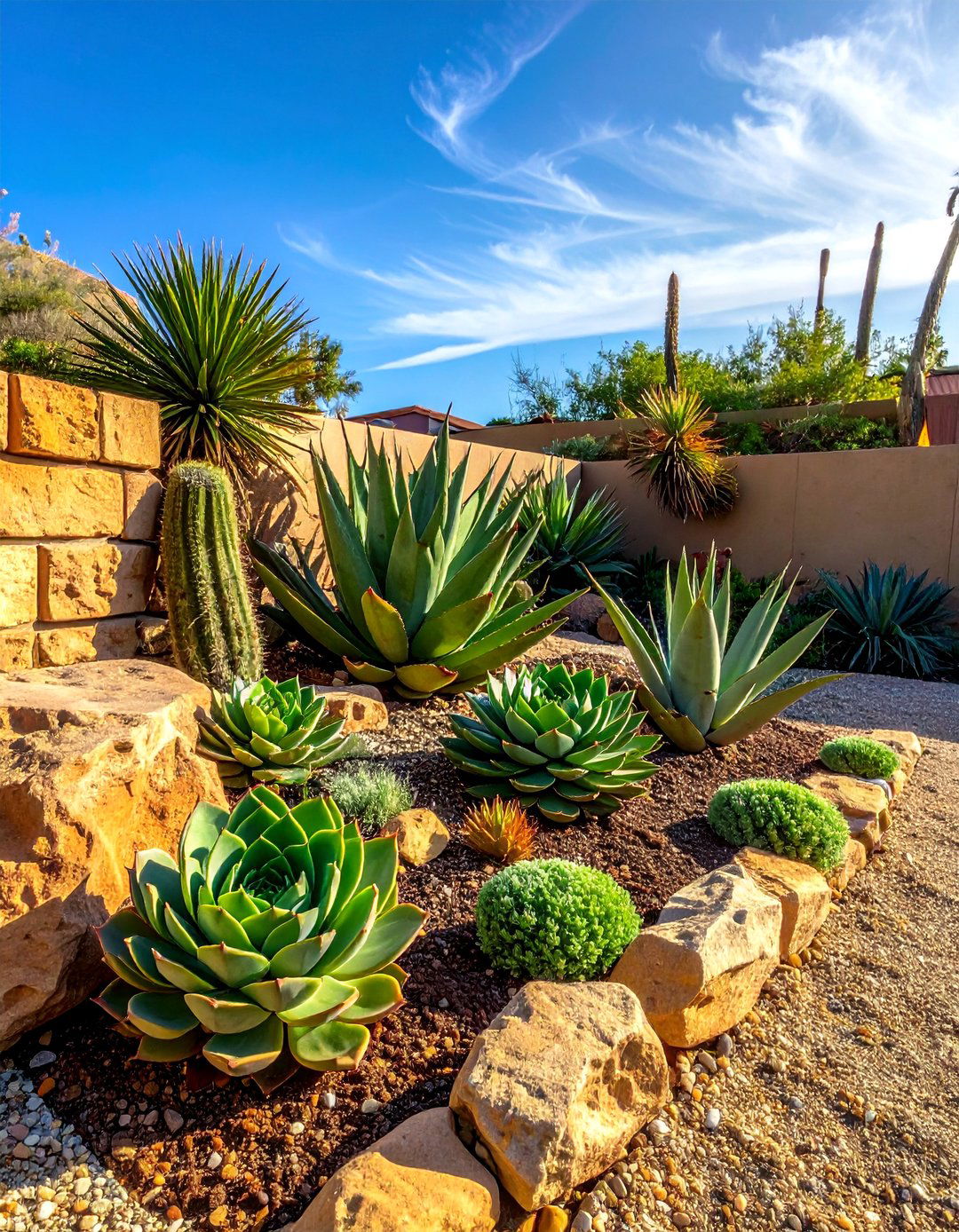
For a striking, modern, and incredibly low-maintenance option, design a corner garden featuring succulents and decorative rocks. This xeriscape approach is perfect for sunny, dry areas and conserves water. Start with a base of gravel or decomposed granite and arrange a few larger, interesting rocks to create structure. Then, plant a variety of succulents with different shapes, colors, and textures, such as echeverias, aloes, and sedums. The sculptural forms of the succulents contrast beautifully with the rugged texture of the rocks, creating a visually compelling, drought-tolerant design that requires minimal care yet delivers maximum impact year-round.
21. Creating a Privacy Screen Corner with Tall Grasses
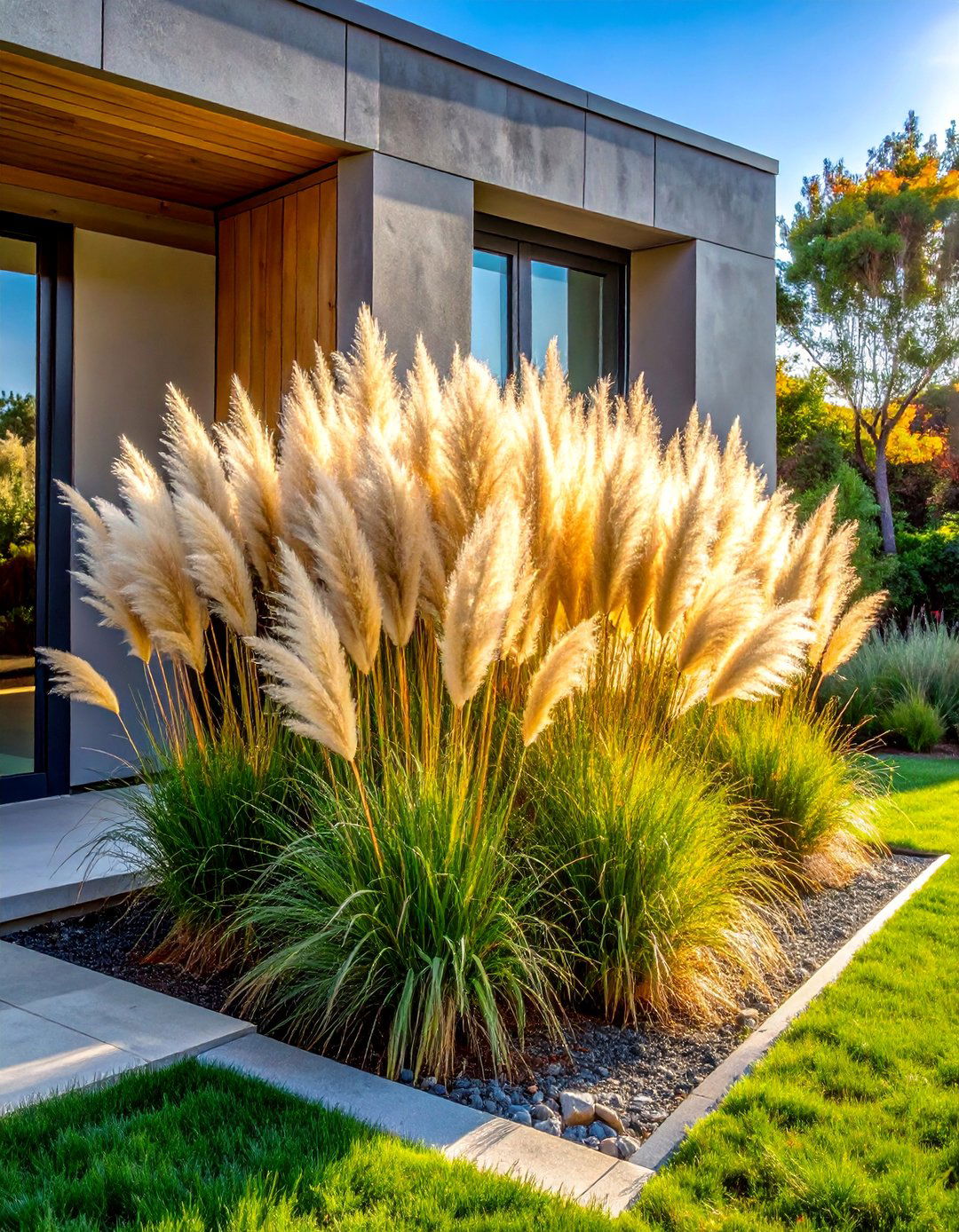
If your corner feels exposed to neighbors or an unsightly view, planting a screen of tall ornamental grasses is an effective and beautiful solution. Varieties like feather reed grass, maiden grass, or switchgrass grow quickly and form dense clumps that offer excellent visual screening. Their fine texture and graceful movement in the wind add a soft, natural element to the landscape, unlike a hard fence. They also provide year-round interest, with beautiful plumes in late summer and golden foliage that persists through winter. Planting a dense row of these grasses will quickly turn an open corner into a private and serene personal sanctuary.
22. Corner Landscaping Featuring a Garden Archway Entrance
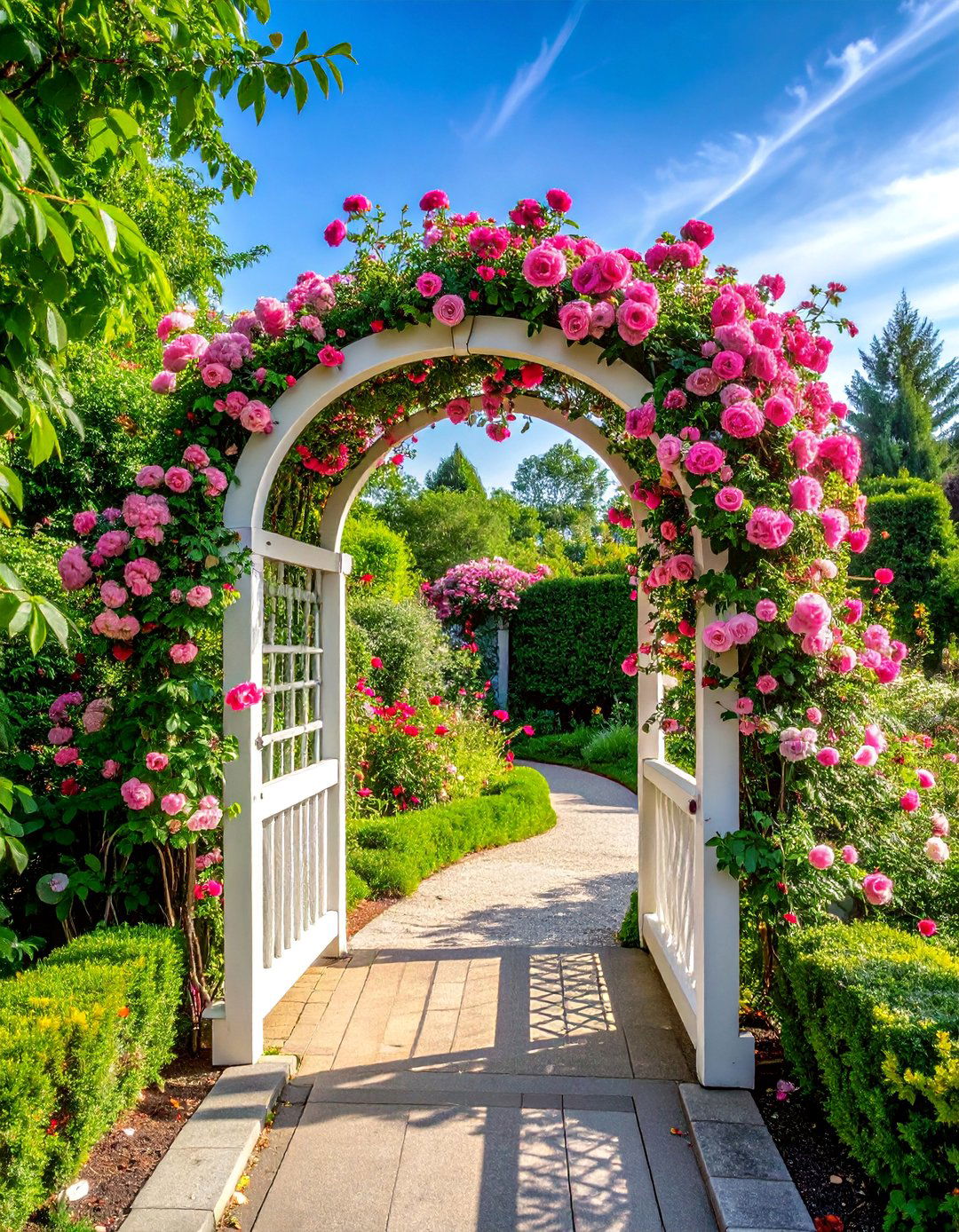
Make a grand statement by turning your corner into a formal entrance to another part of the yard. Install a beautiful garden archway made of wood, metal, or vinyl. Position it diagonally across the corner to create a clear pathway. Plant classic climbing flowers like roses or clematis to grow over the arch, adding romance and color. This structure creates a sense of journey and mystery, inviting people to explore what lies beyond. It effectively frames the view and transforms a simple corner into a purposeful and elegant transition point, adding a touch of formal garden design charm to your landscape.
23. A Woodland Shade Corner Garden with Ferns and Hostas
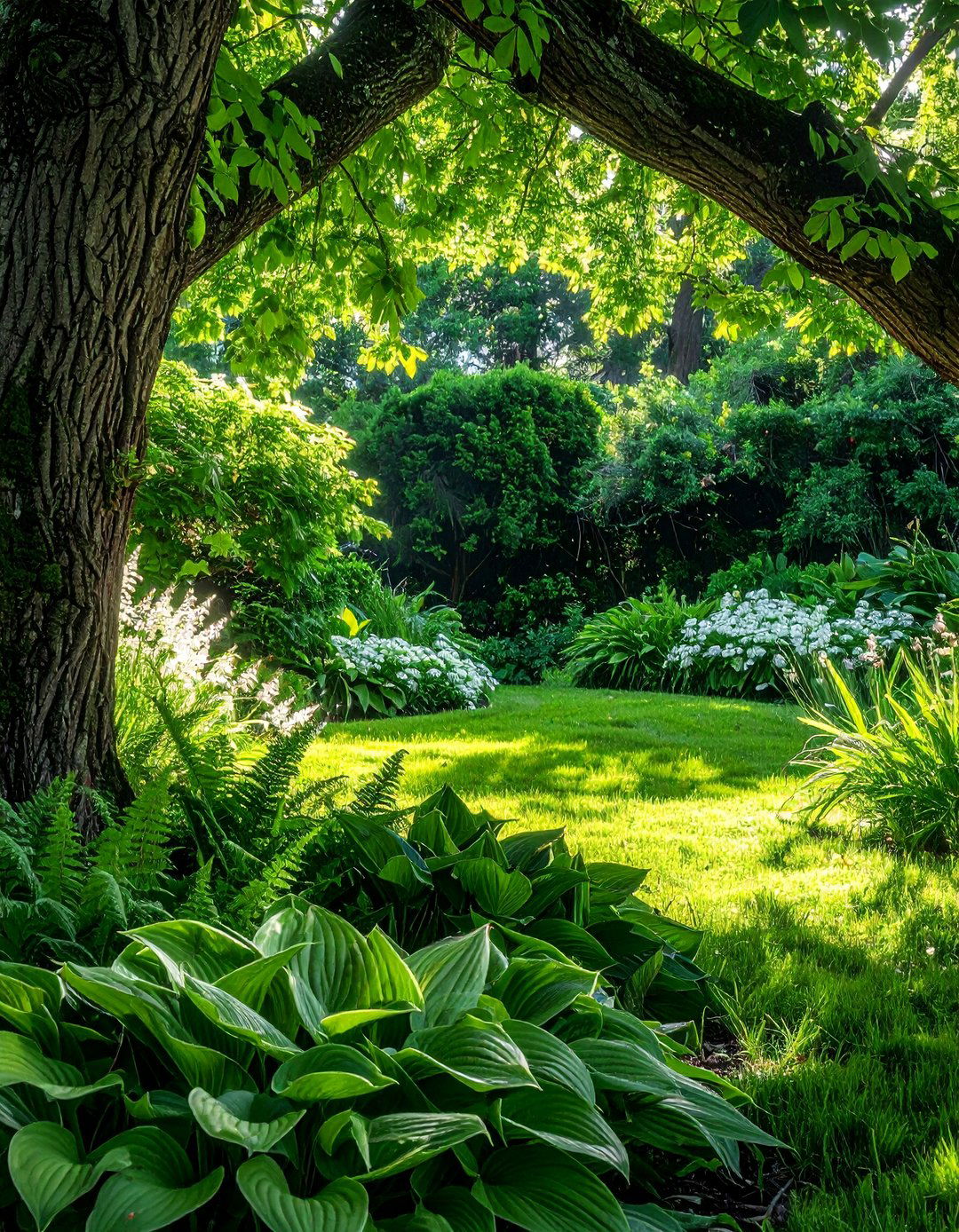
Many yard corners are shady due to fences or neighboring trees, creating a perfect microclimate for a woodland garden. Embrace the lower light levels by planting a tapestry of shade-loving plants. Use a mix of ferns for their delicate, feathery textures, and hostas for their bold, colorful leaves. Add other shade perennials like astilbe for its fluffy plumes of color, coral bells for their vibrant foliage, and hellebores for early spring blooms. A layer of mulch will help retain moisture and suppress weeds. This design transforms a dark, challenging corner into a cool, lush, and tranquil retreat reminiscent of a forest floor.
24. Designing a Children’s Corner Play Area with Natural Elements
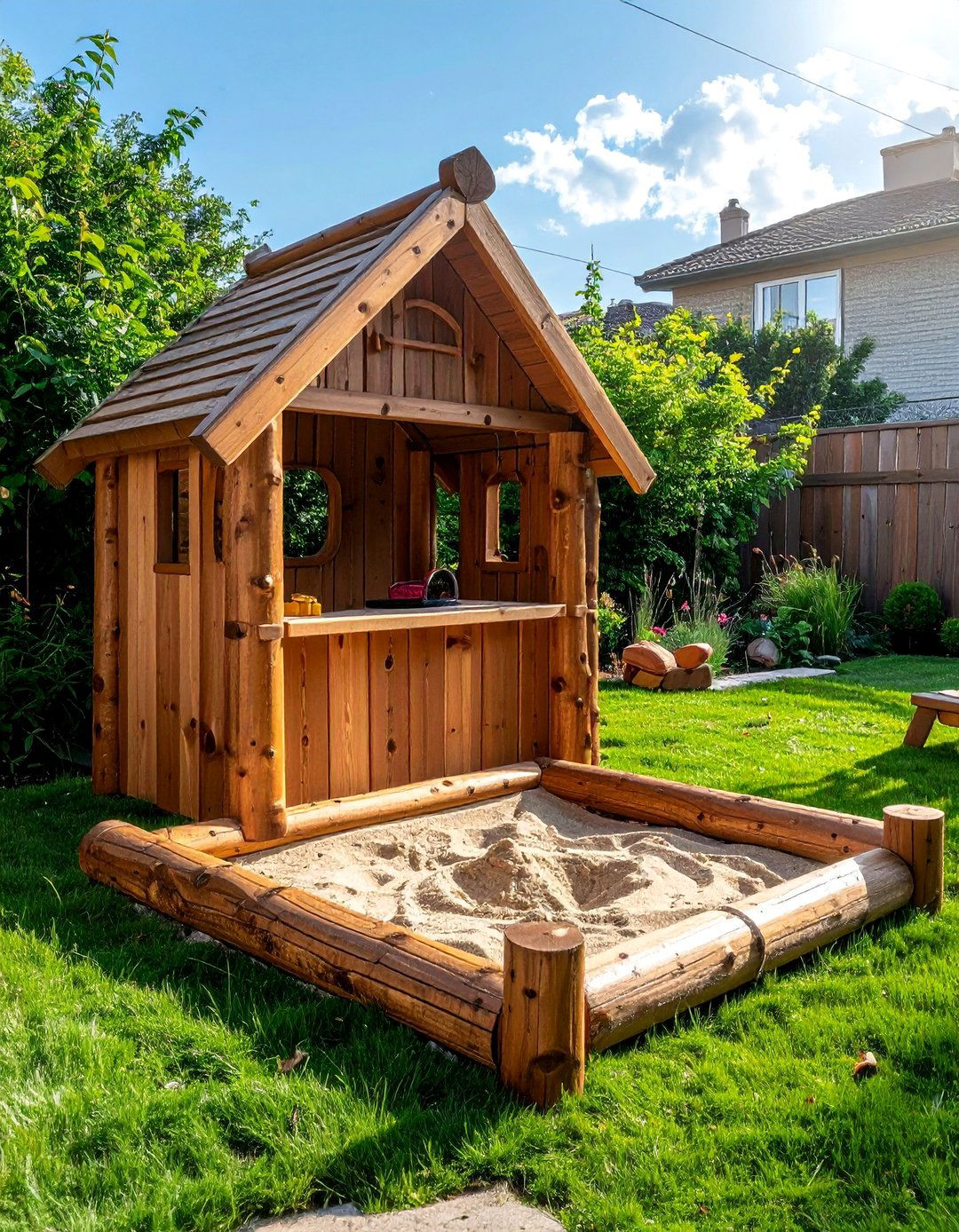
Transform an underutilized corner into a magical play space for children using natural elements. Instead of bright plastic, consider a small cedar playhouse, a rustic log-slice pathway, or a simple sandpit framed with smooth, flat-topped logs for seating. A "mud kitchen" can be created with old pots and pans on a simple wooden bench. Surround the area with durable, non-toxic plants. This approach encourages imaginative play and connects children with nature. It blends seamlessly into the landscape, providing a dedicated area for fun that enhances the yard's overall aesthetic rather than detracting from it, making it a joy for all ages.
25. Corner Landscaping with a Hammock or Swing Chair
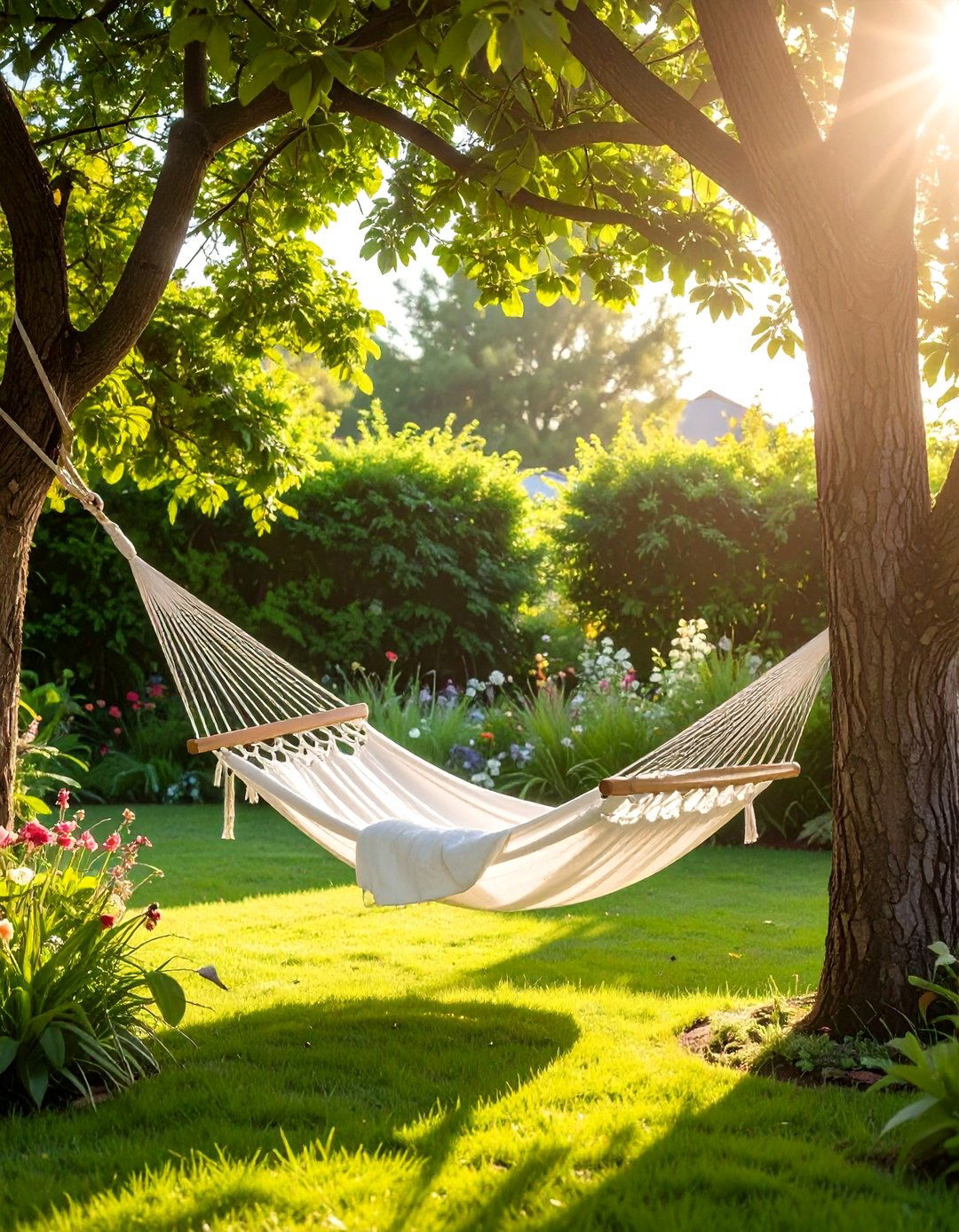
Create the ultimate relaxation spot by installing a hammock or a stylish hanging swing chair in a corner. If you have two sturdy trees in the right position, a classic hammock is a perfect choice. Alternatively, a freestanding hammock stand or a sturdy post-and-beam structure can be built to support a swing. Position it to take advantage of shade and pleasant views. Surround the area with soft, fragrant plants like lavender or jasmine to enhance the sensory experience. This simple addition provides a dedicated space for napping, reading, or gently swaying, turning a quiet corner into a personal escape from daily stress.
26. Incorporating a Potting Bench in a Functional Corner Garden
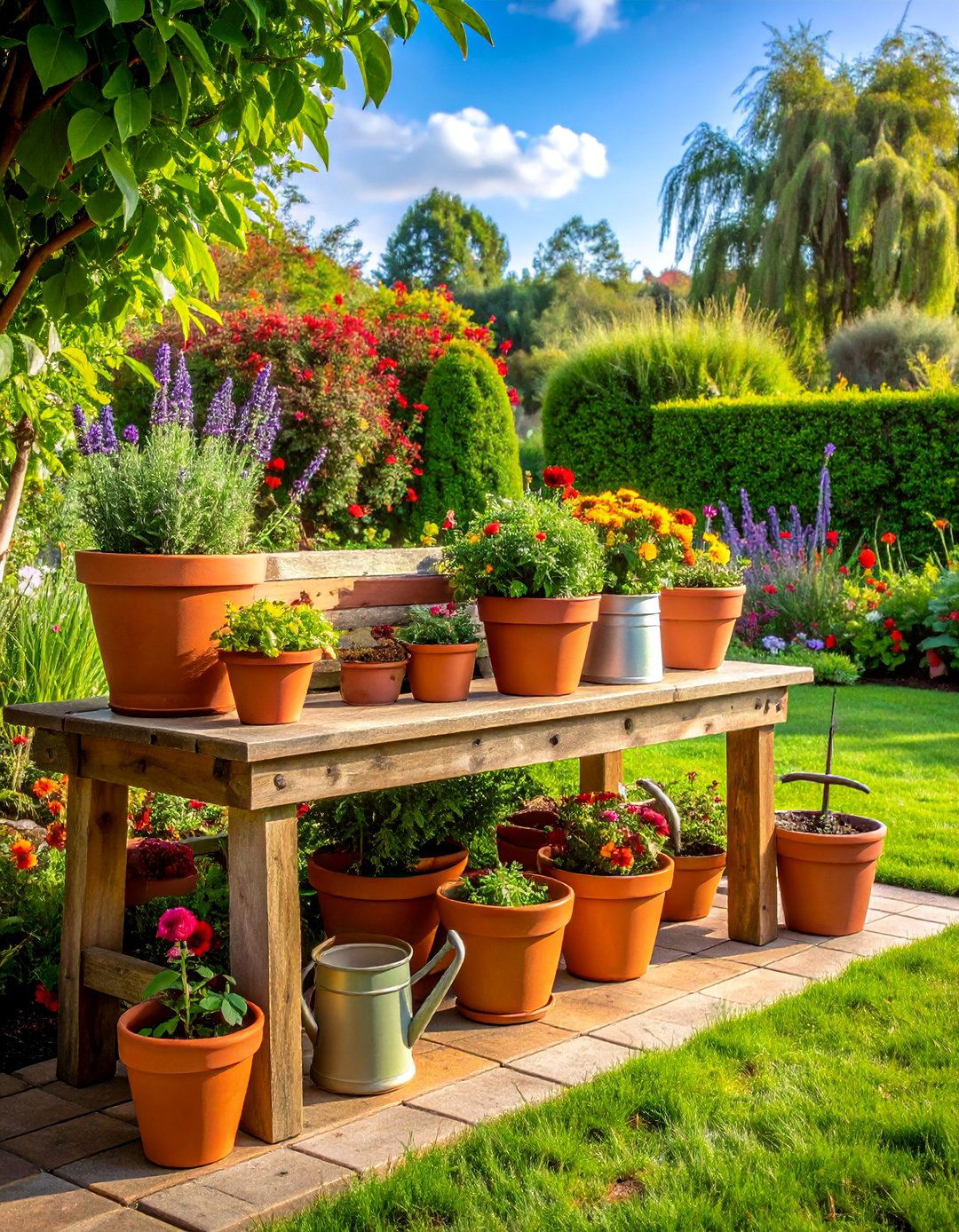
For the avid gardener, a corner can become a highly functional and attractive outdoor workspace. Place a stylish potting bench against the fence, providing a dedicated area for planting containers and storing tools. Choose a bench with shelves for supplies and a durable work surface. Organize terracotta pots, watering cans, and hand tools to create a charming, rustic display. A small patch of gravel or pavers underfoot keeps the area tidy. Surround the bench with a mix of perennial flowers and a few of your favorite container creations. This practical setup keeps gardening messes contained while adding a personalized, workshop-style charm to your landscape.
27. A Symmetrical Corner Landscaping Design with Formal Hedges
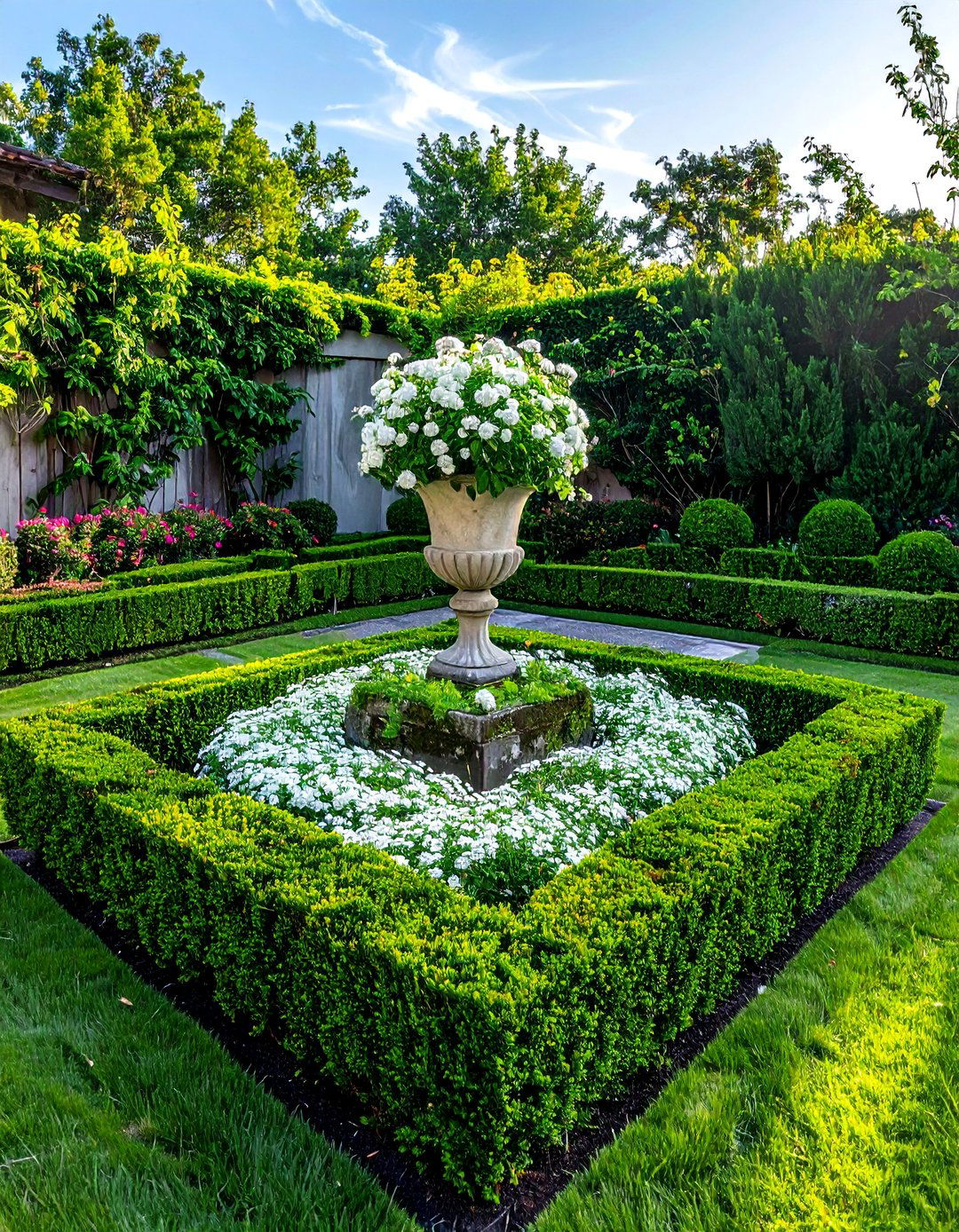
For a classic and elegant look, consider a formal, symmetrical design. This style relies on clean lines, geometric shapes, and balanced plantings. Use neatly clipped boxwood hedges to create a triangular or L-shaped border, defining the corner bed with precision. Inside the hedge, you can place a central feature, such as a classical urn, a sundial, or a small statue. Fill the surrounding space with a single type of flowering plant, like white hydrangeas or roses, for a uniform and sophisticated appearance. This highly structured approach brings a sense of order, grandeur, and timeless beauty to the yard.
28. Using Outdoor Rugs and Furniture for a Corner Living Space
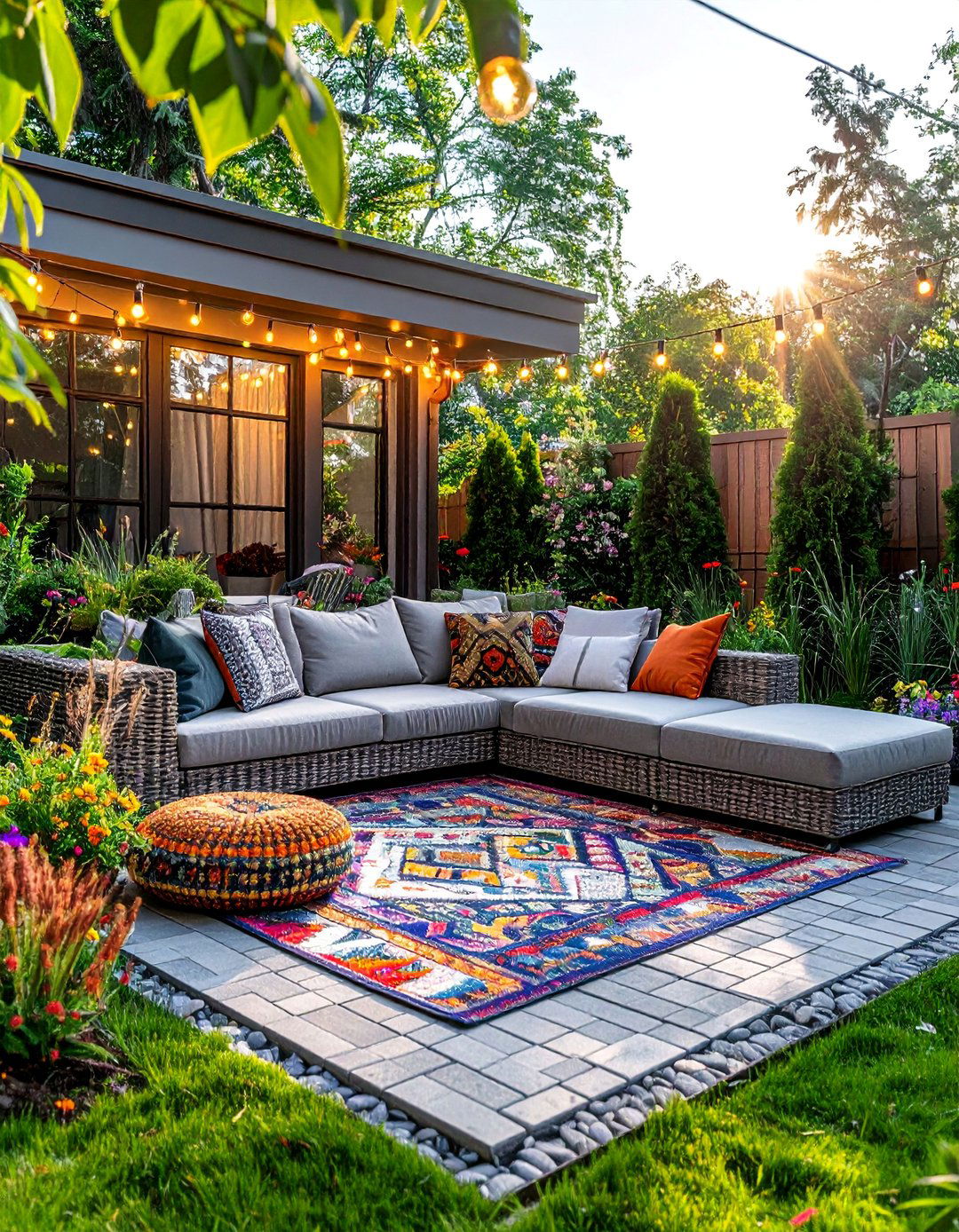
Extend your indoor living space outward by creating a comfortable corner lounge area. Define the space with a durable outdoor rug laid over a simple paver or gravel base. Arrange weather-resistant furniture, such as a deep-seated sofa and armchairs, in a conversational grouping. Add a coffee table for drinks and decorative items. Potted plants, outdoor cushions, and string lights can complete the cozy atmosphere. This design effectively creates an "outdoor room" feeling, providing a stylish and comfortable spot for entertaining or relaxing that requires minimal landscaping work while offering maximum lifestyle benefits, making full use of every square foot.
29. Corner Landscaping with a Bubbling Urn Fountain
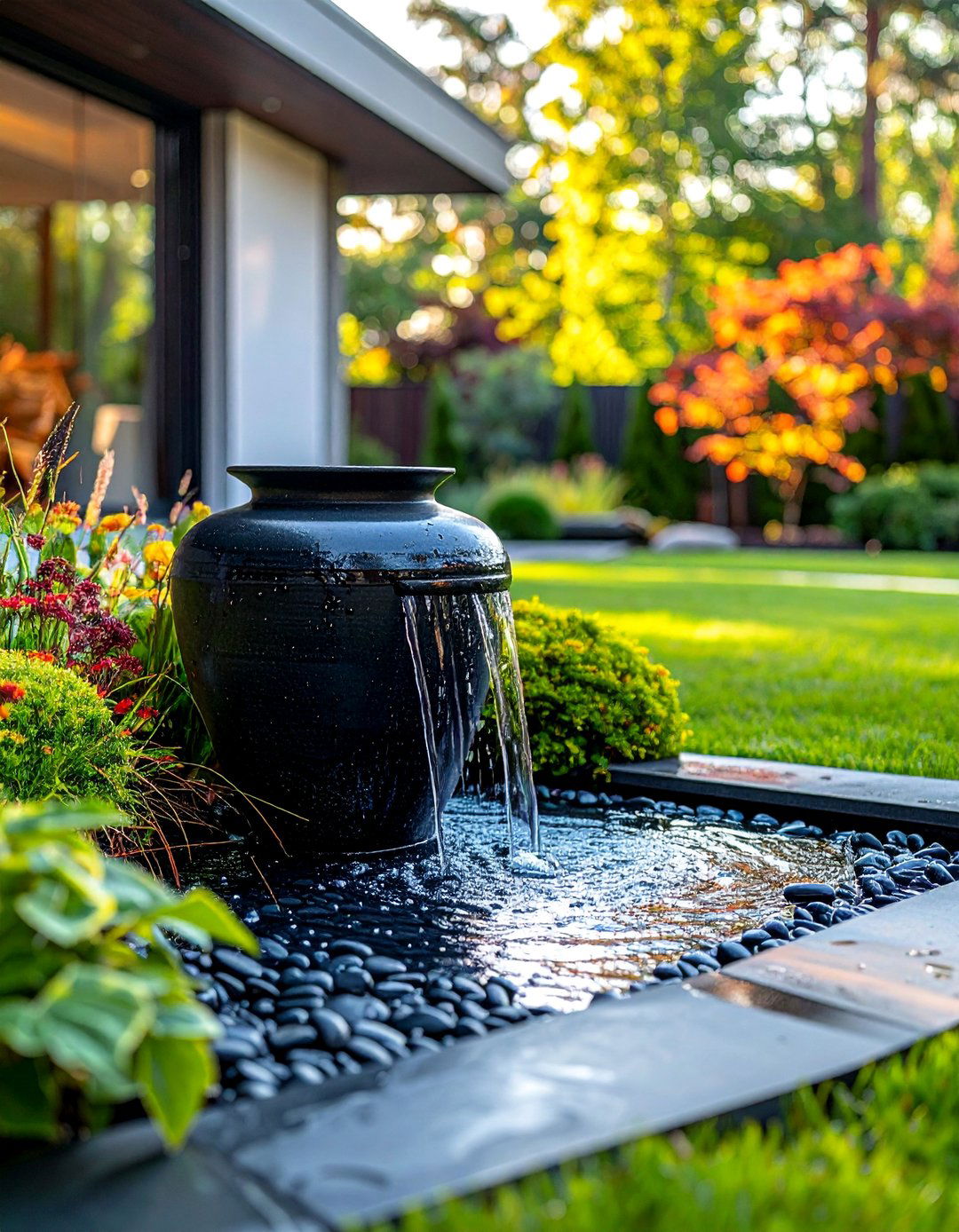
A bubbling urn fountain is a simple yet elegant water feature that fits perfectly into small corners. These self-contained fountains consist of a decorative urn or pot where water bubbles up and overflows, trickling down the sides into a hidden underground reservoir. The gentle sound is incredibly relaxing, and the feature itself acts as a beautiful piece of garden art. Surround the urn with a bed of smooth, dark river stones to create a clean, modern look. A few select plantings, like Japanese forest grass or dwarf hostas, can soften the edges. This low-maintenance feature adds sound, motion, and a sophisticated focal point.
30. A Fragrant Corner Garden with Aromatic Flowers and Herbs
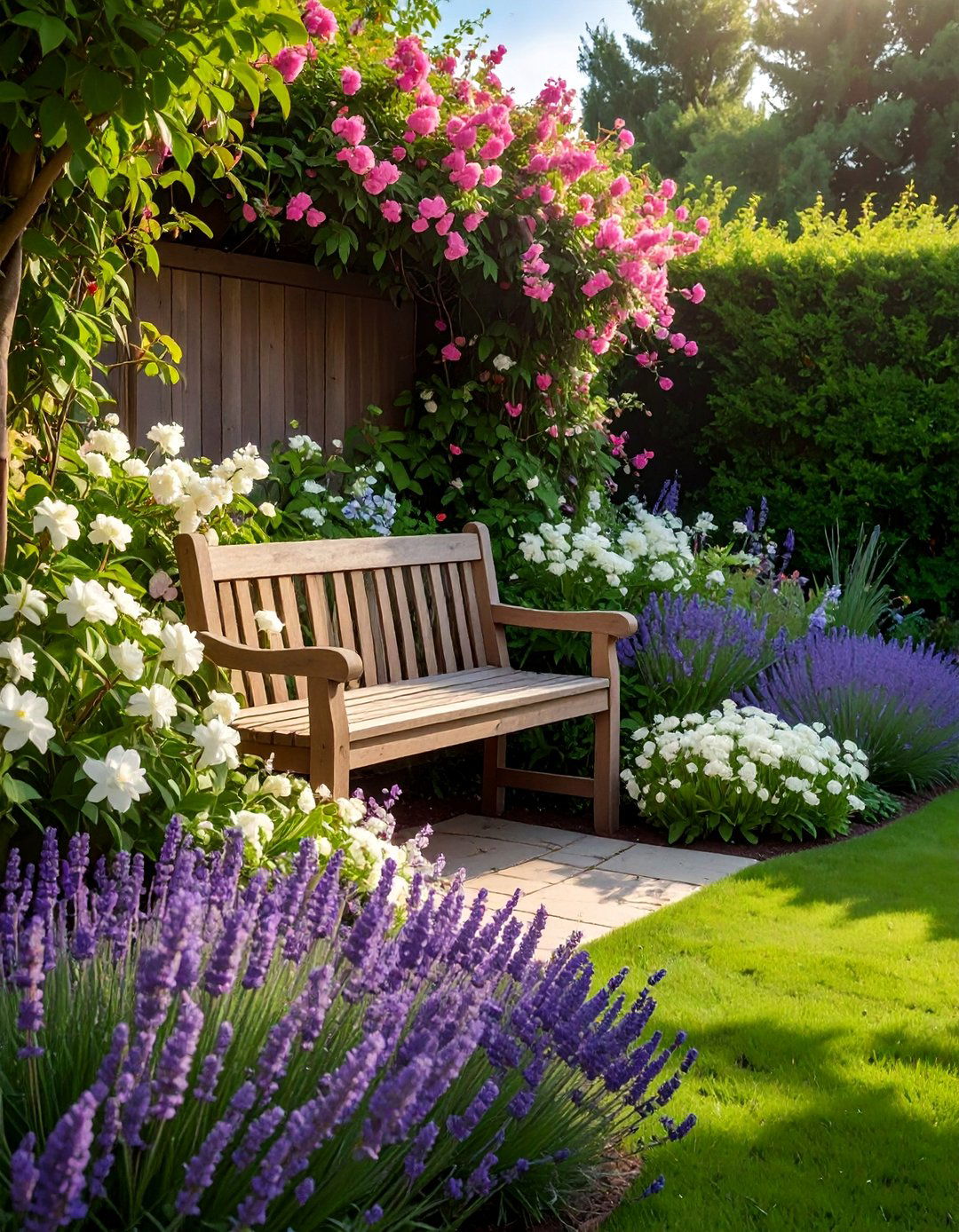
Engage all the senses by dedicating a corner to fragrant plants. Choose a location where breezes will carry the scents through the yard or into your home through open windows. Plant a mix of aromatic flowers like roses, gardenias, and jasmine, which can climb a corner trellis. Incorporate fragrant herbs such as lavender, rosemary, and lemon balm, which release their oils when brushed against. A small bench placed within the garden allows you to sit and immerse yourself in the delightful aromas. This design creates a deeply pleasant and therapeutic space that offers beauty not just for the eyes, but for the nose as well.
Conclusion:
Ultimately, transforming a corner of your yard is about maximizing potential and reflecting personal style. Whether you opt for a tranquil Zen garden, a functional vegetable patch, a lively pollinator habitat, or a cozy seating area, each idea offers a unique way to reclaim unused space. By layering plants, integrating hardscaping, adding water or light, and defining a clear purpose, any forgotten corner can become an integral and beautiful part of your overall landscape design. The key is to view these spaces not as limitations, but as opportunities for focused, impactful creativity in your outdoor sanctuary.

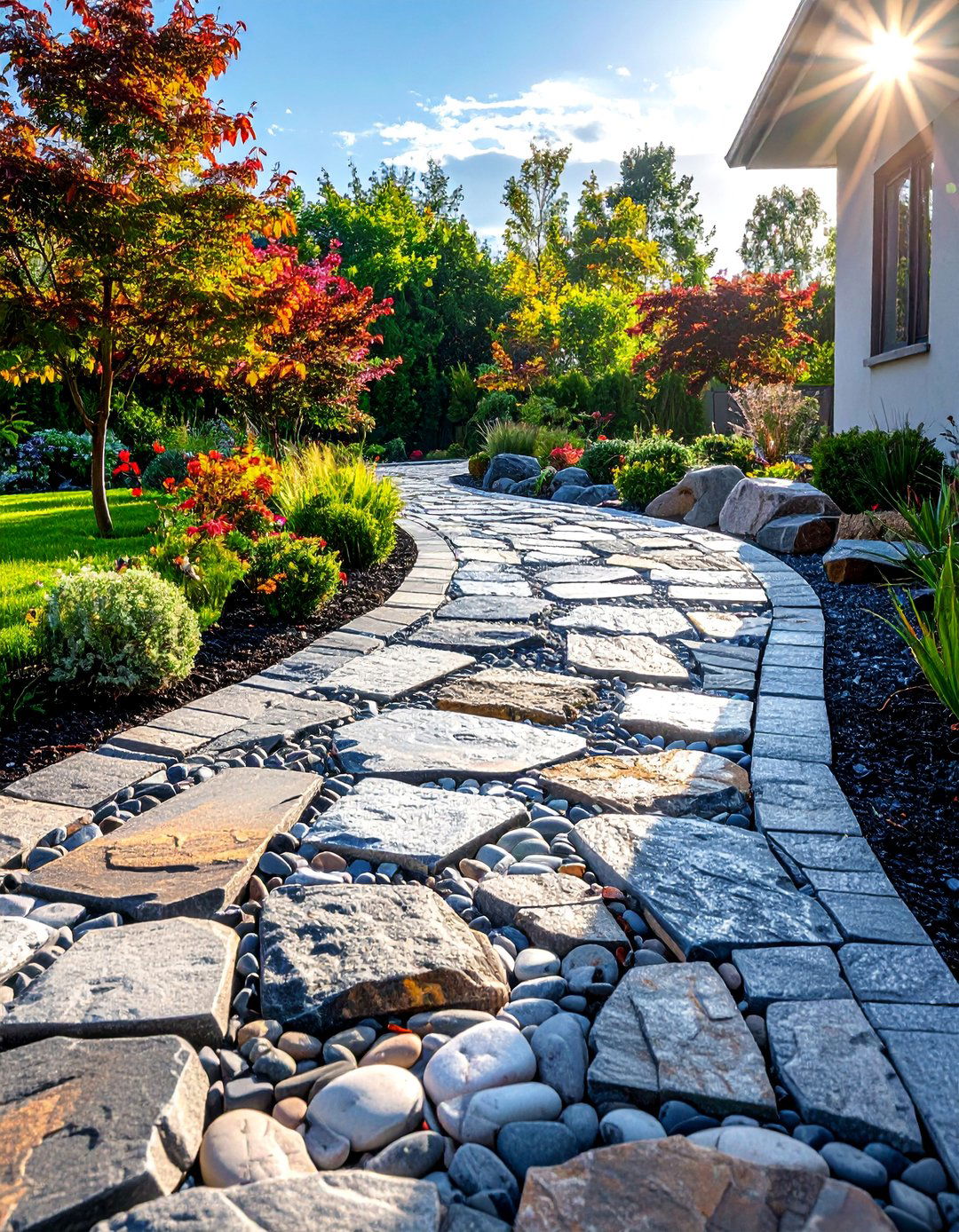
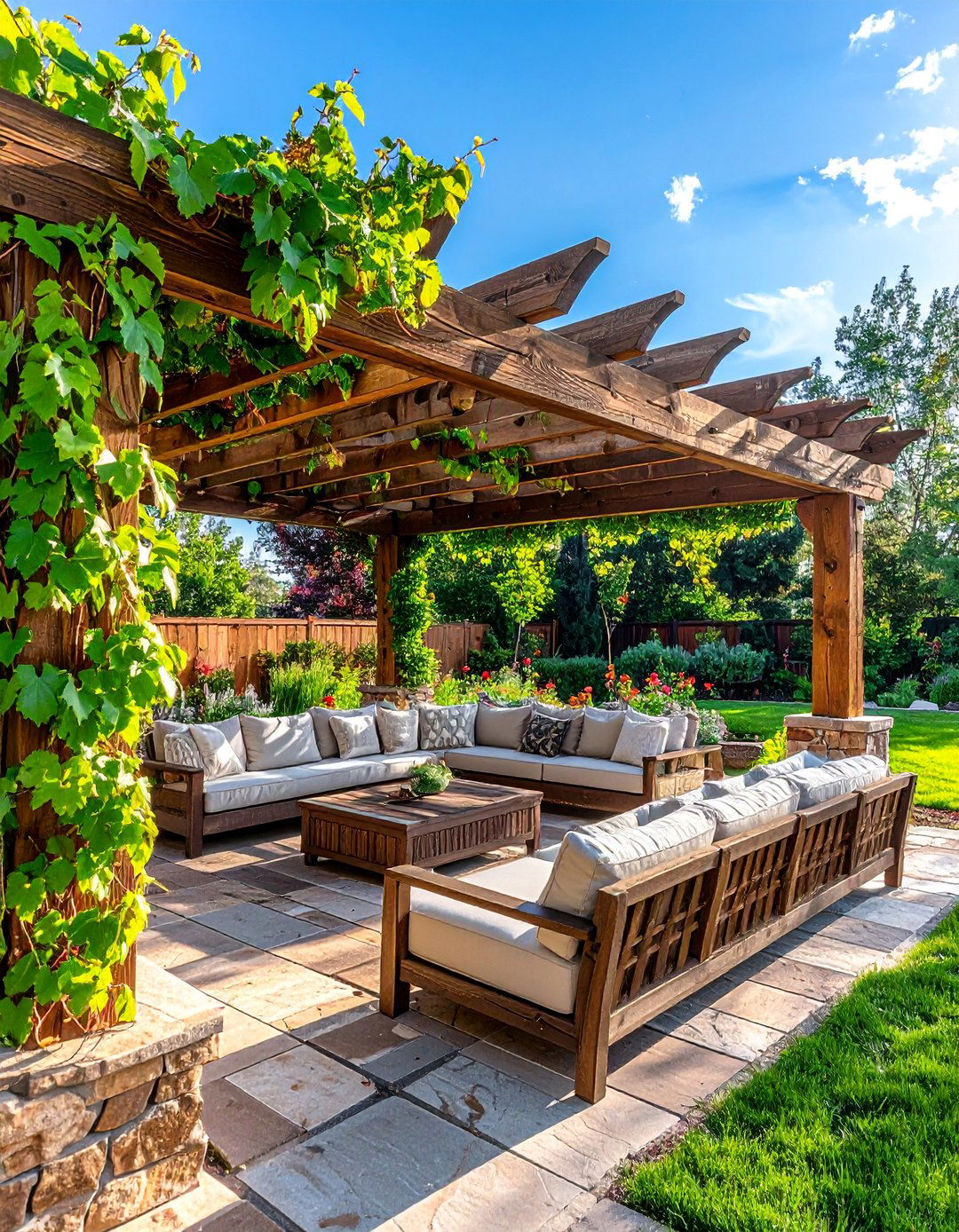
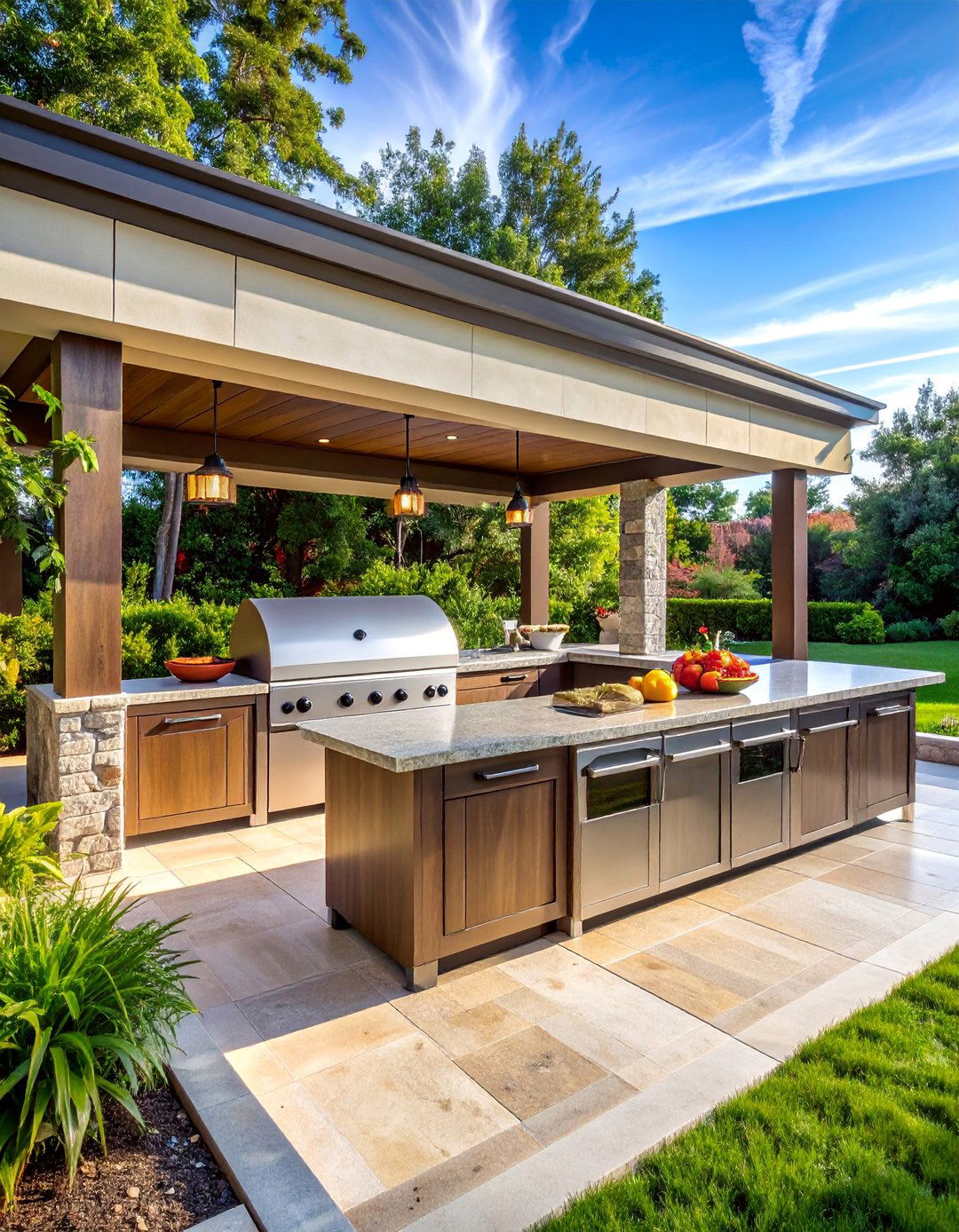
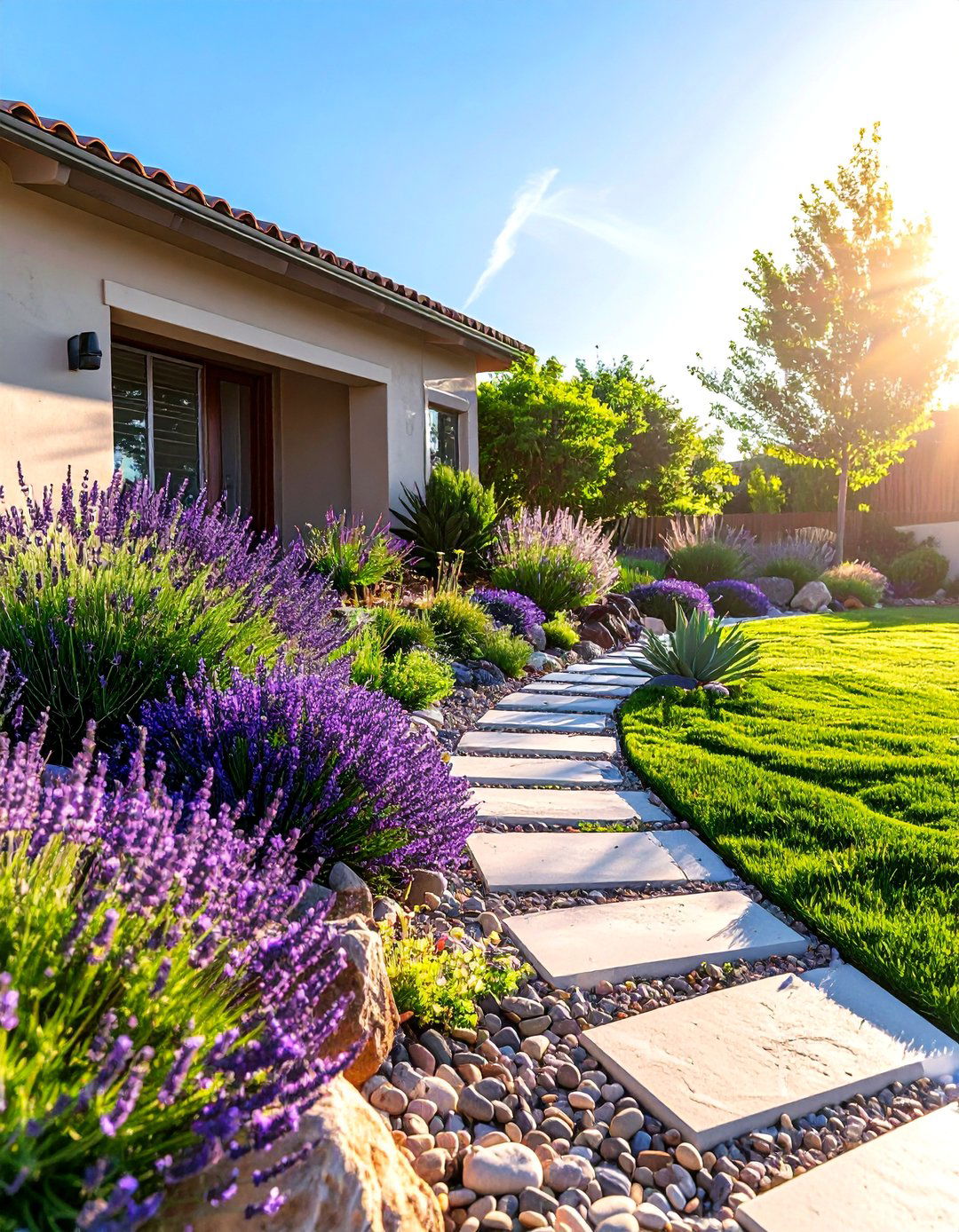
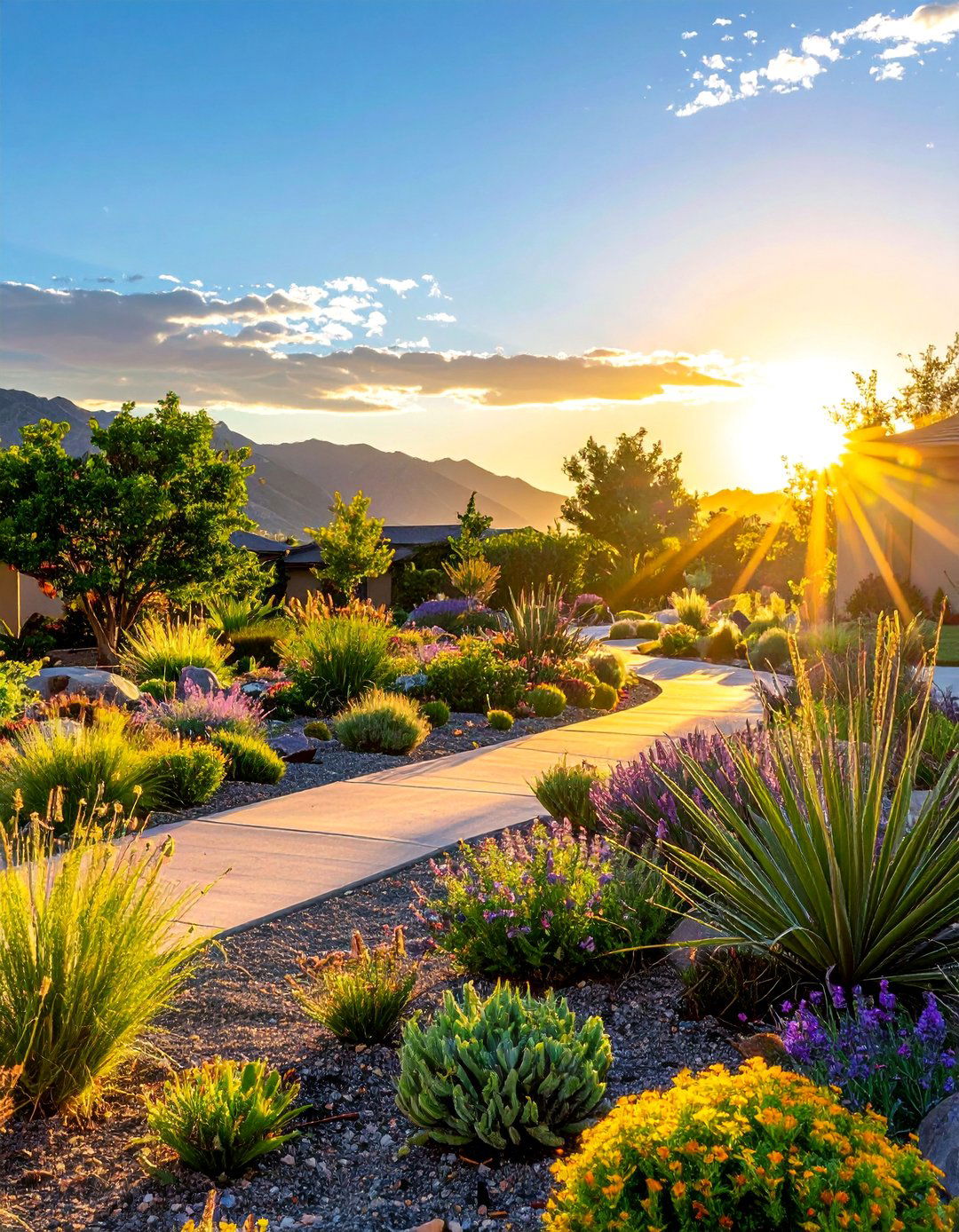
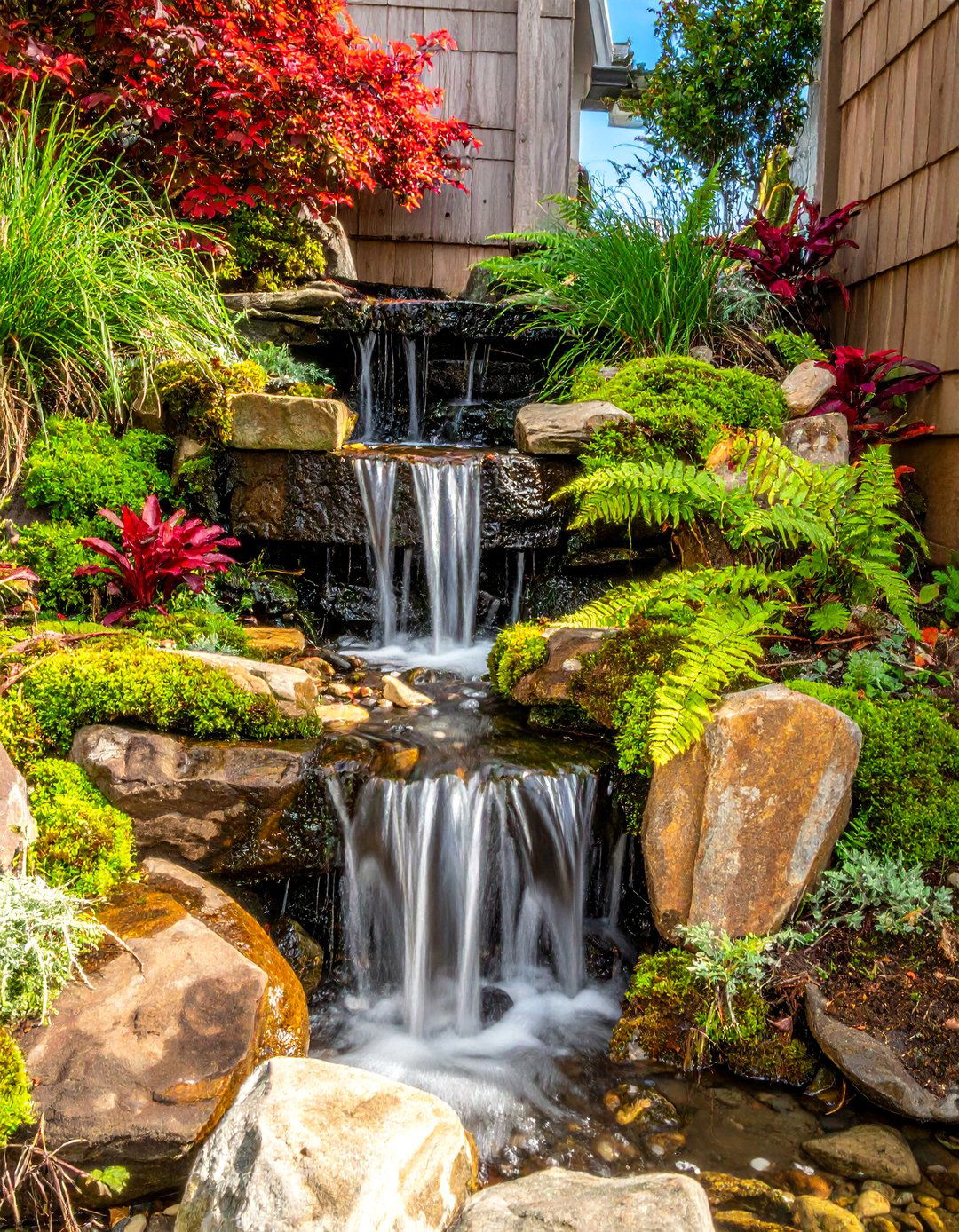
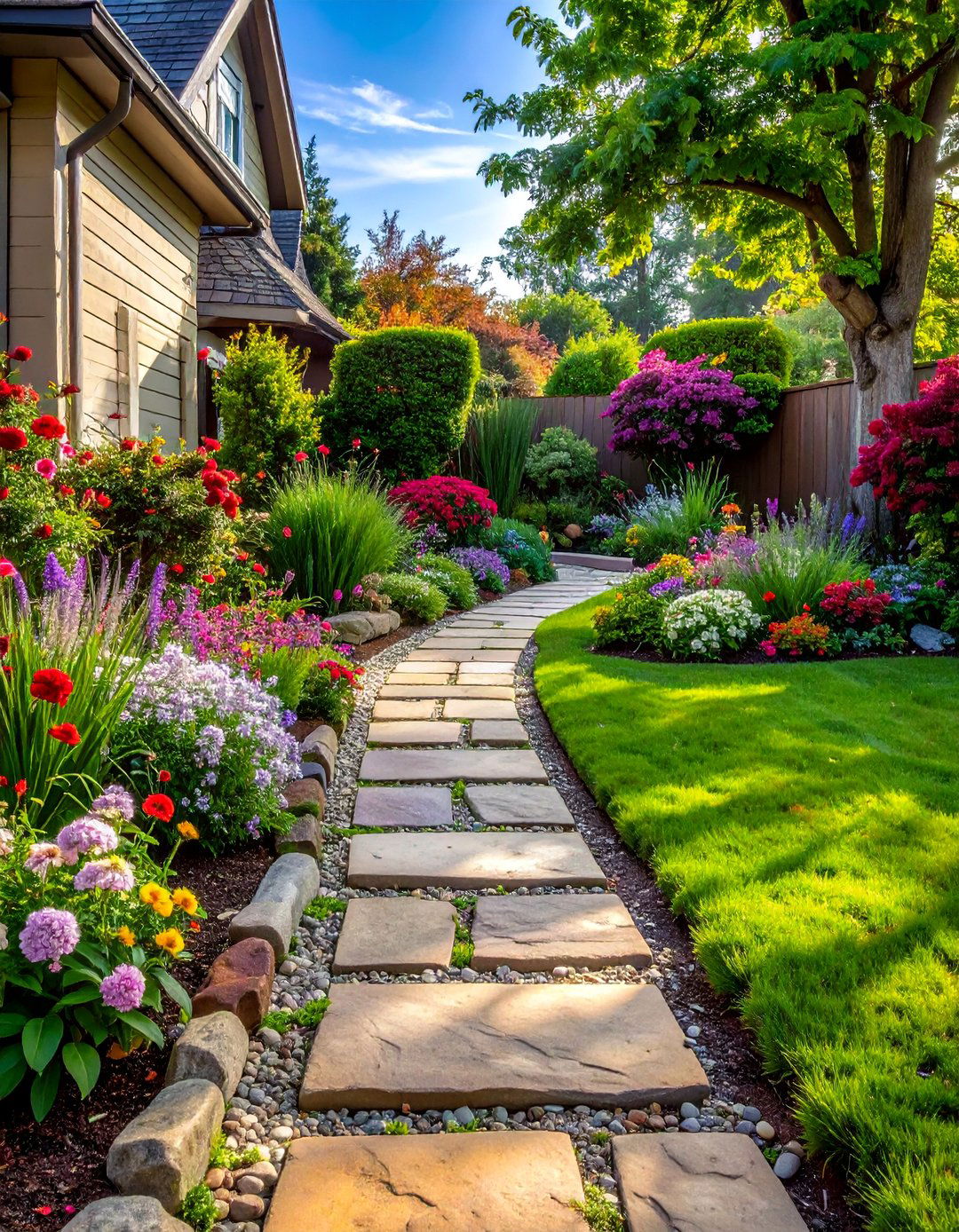
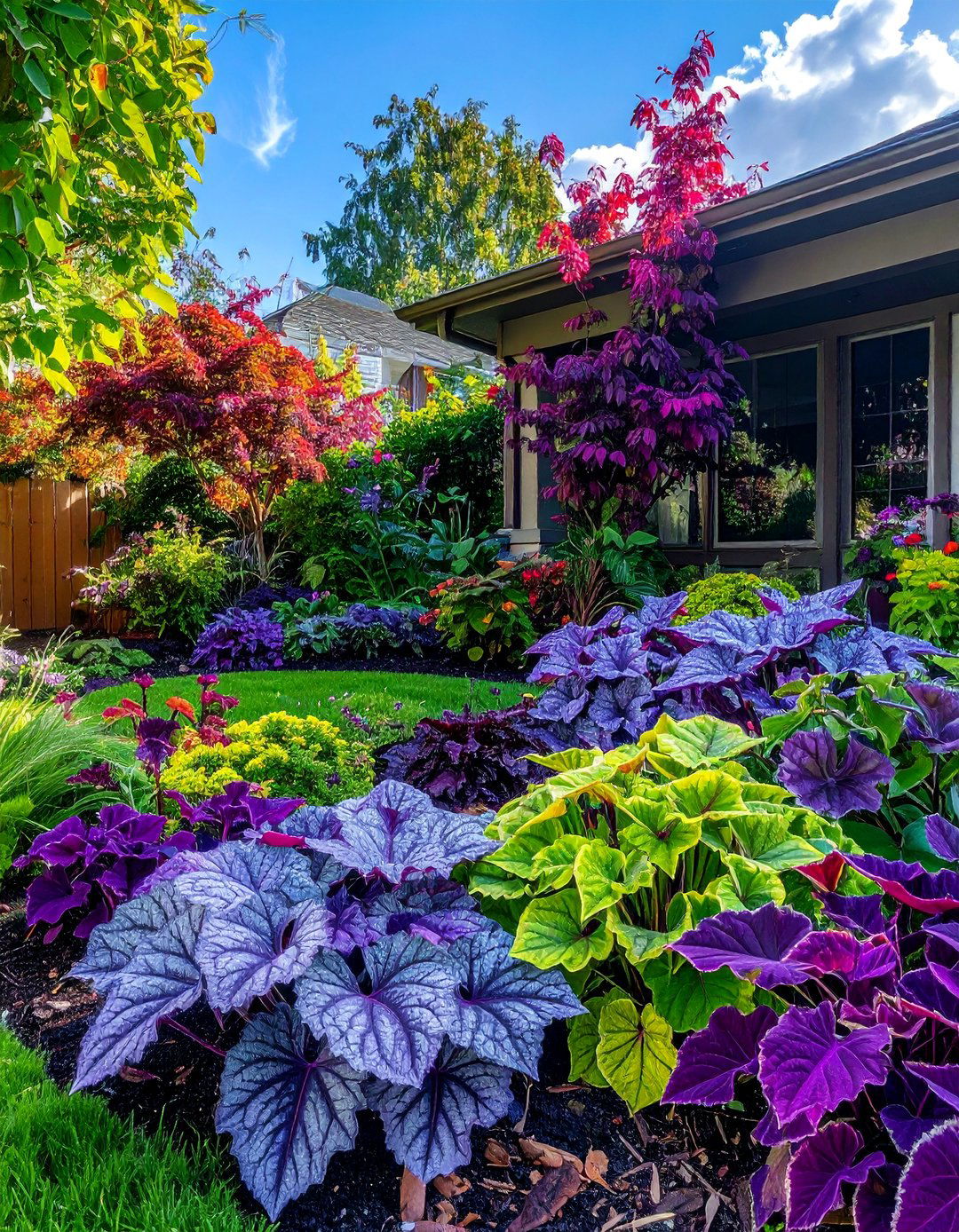
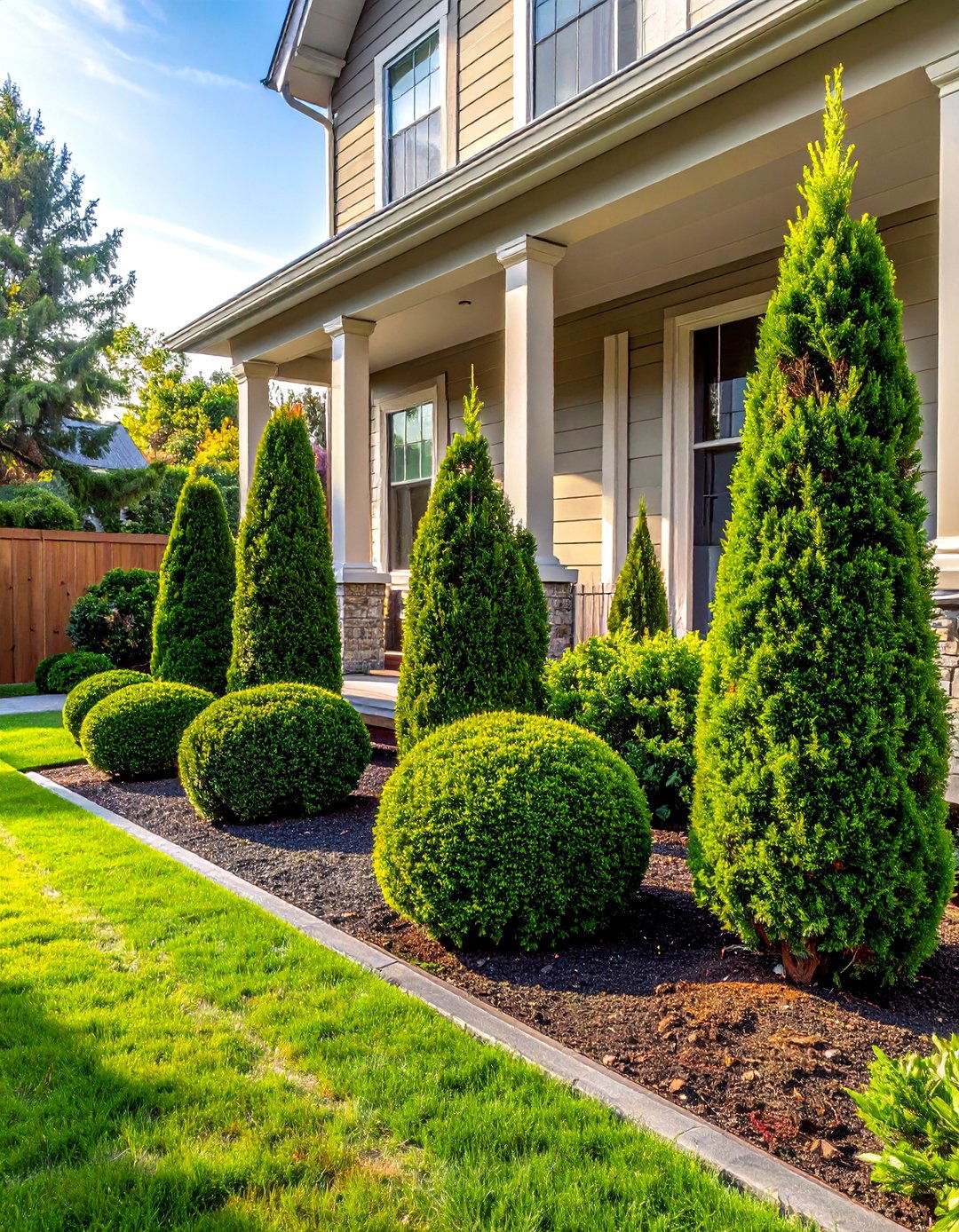
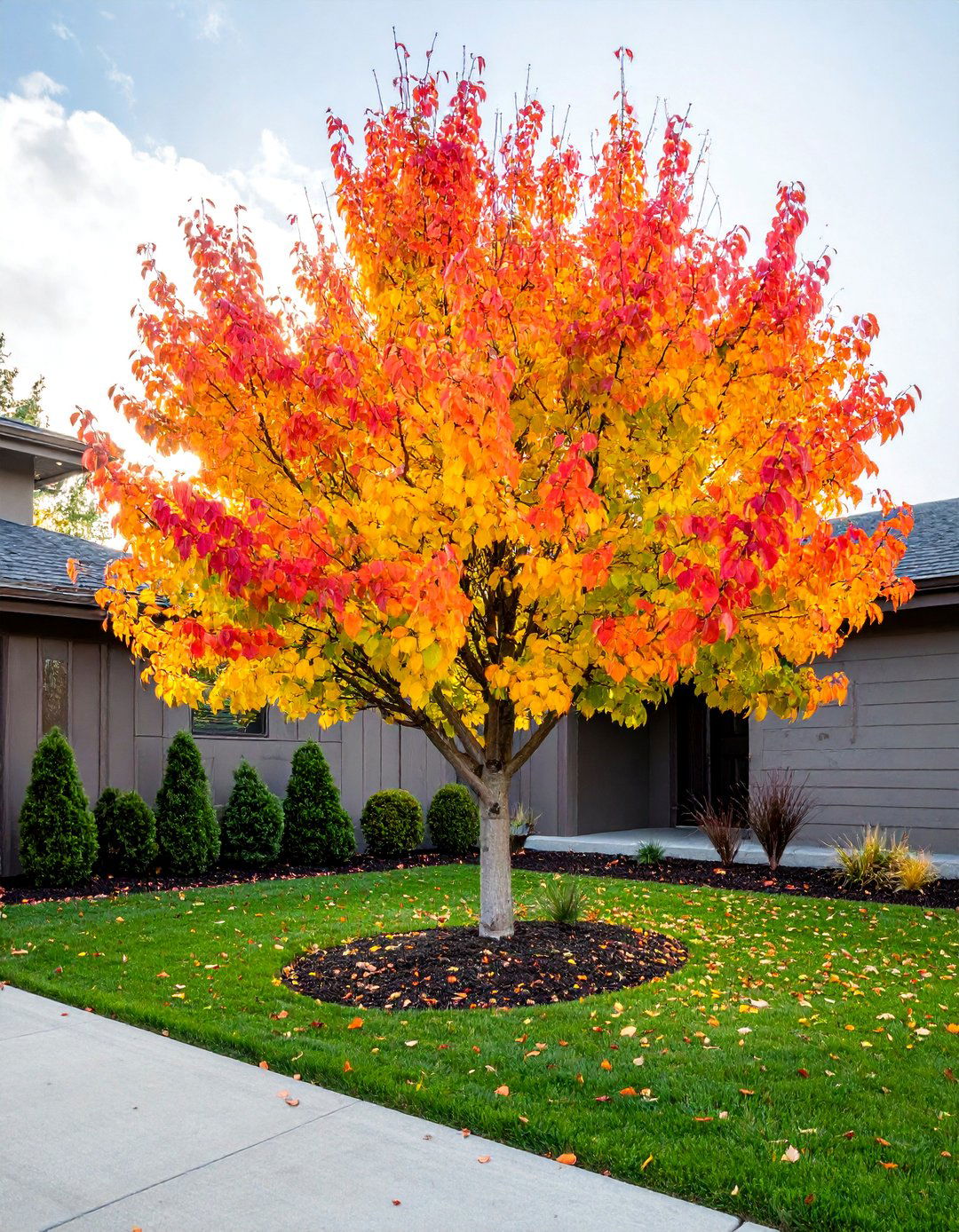
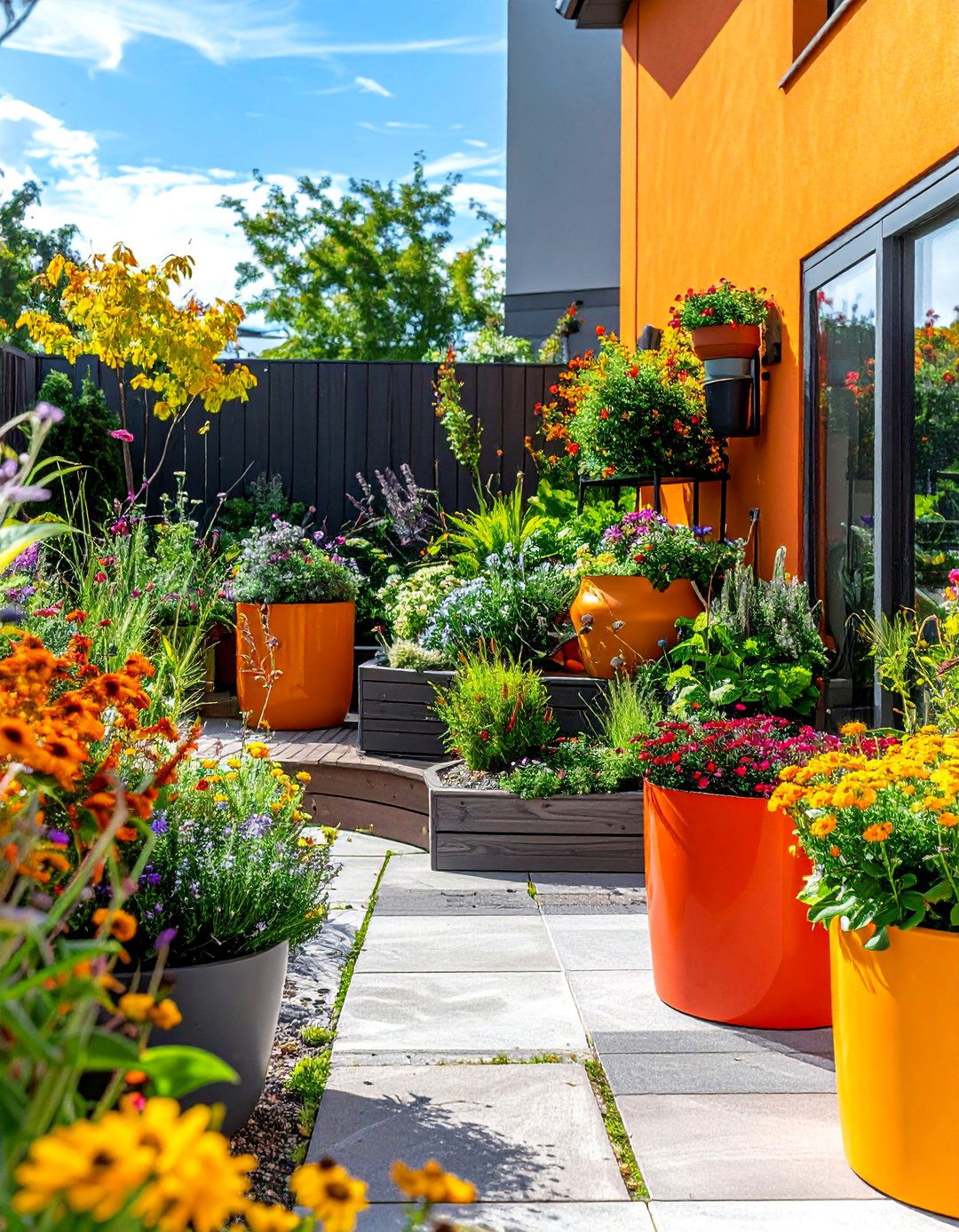
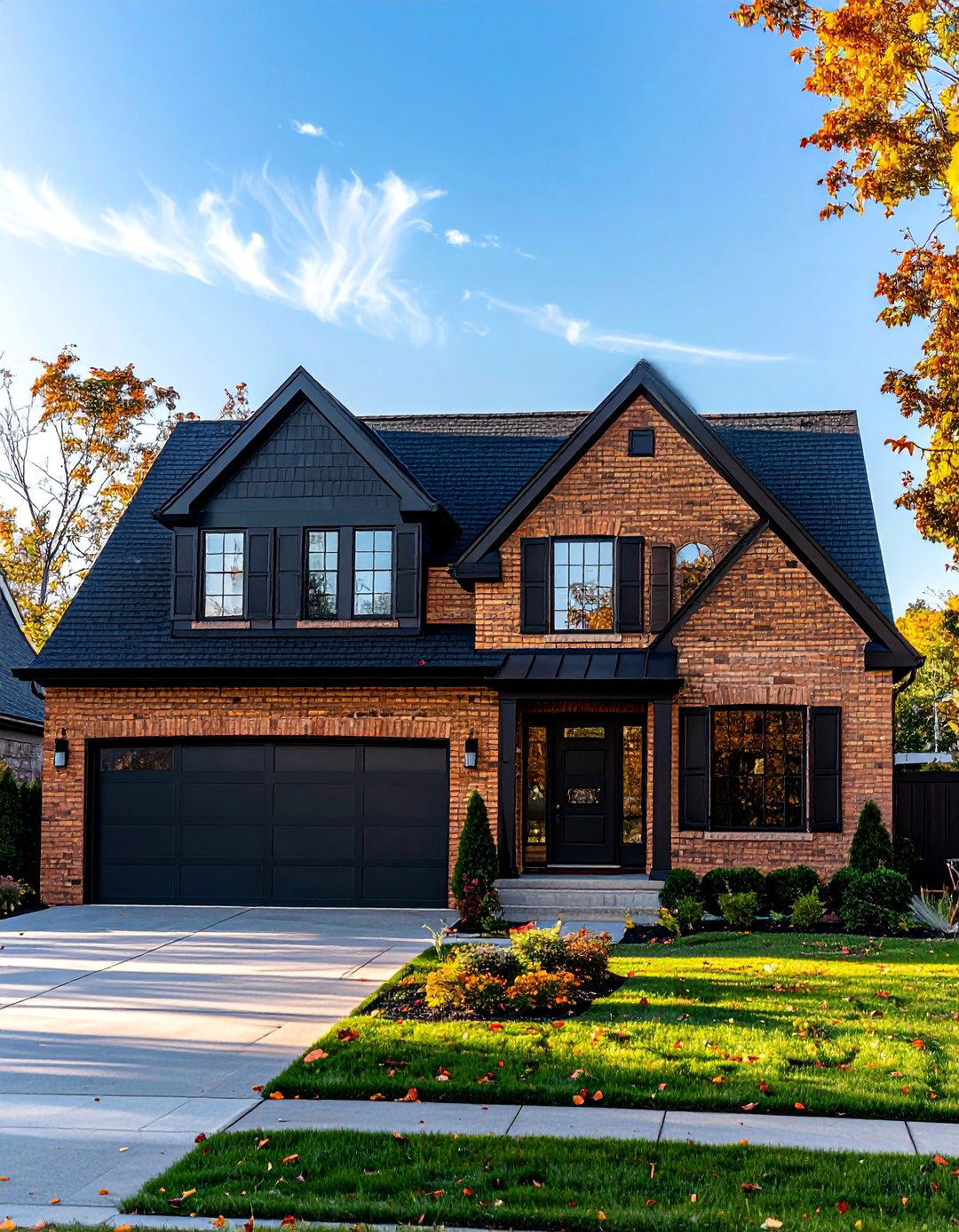
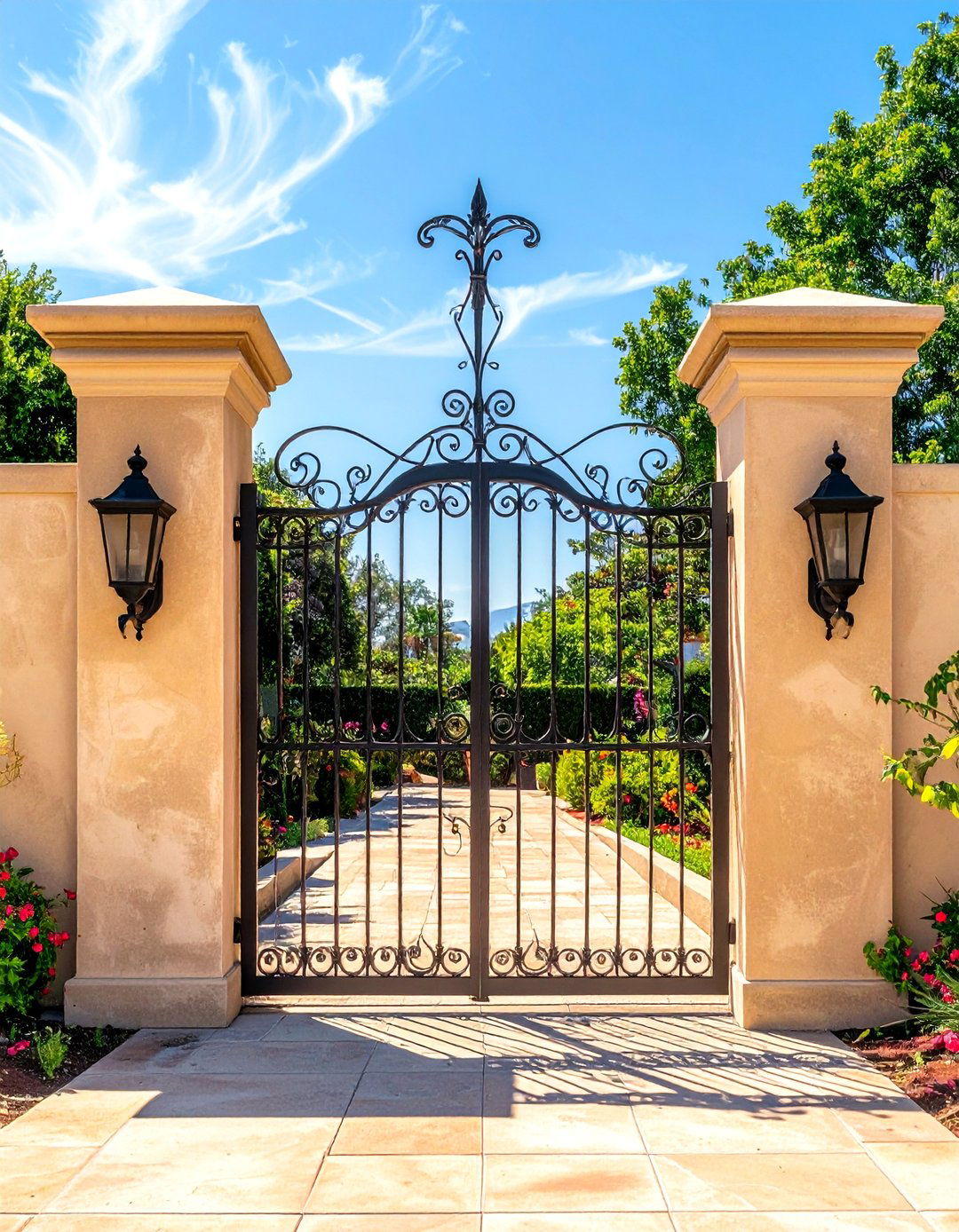
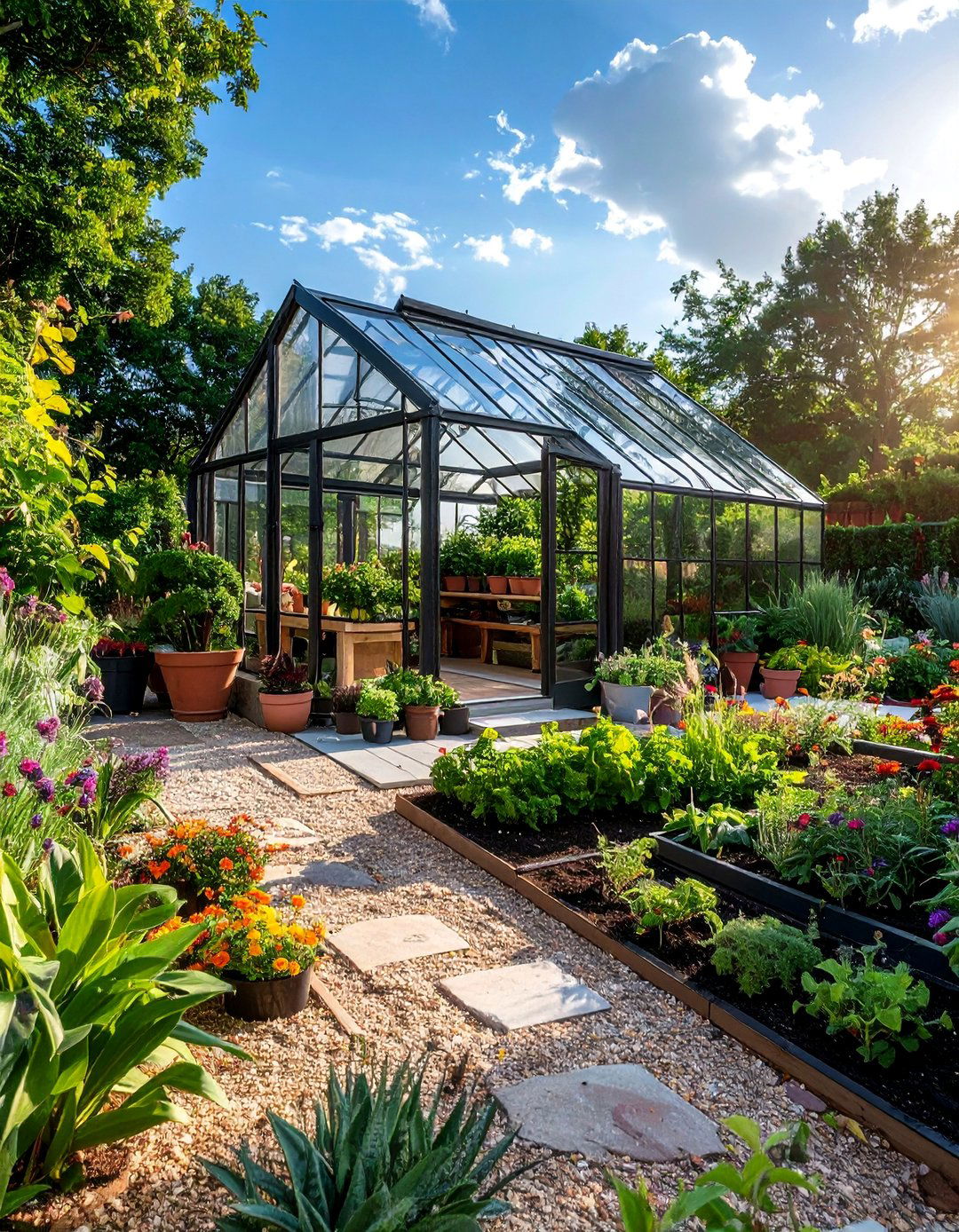
Leave a Reply